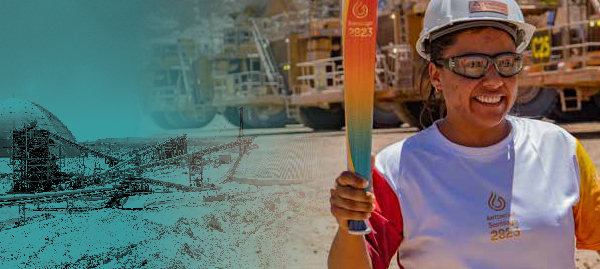
Shaping tomorrow with responsible copper
Sustainability report 2024
Scroll
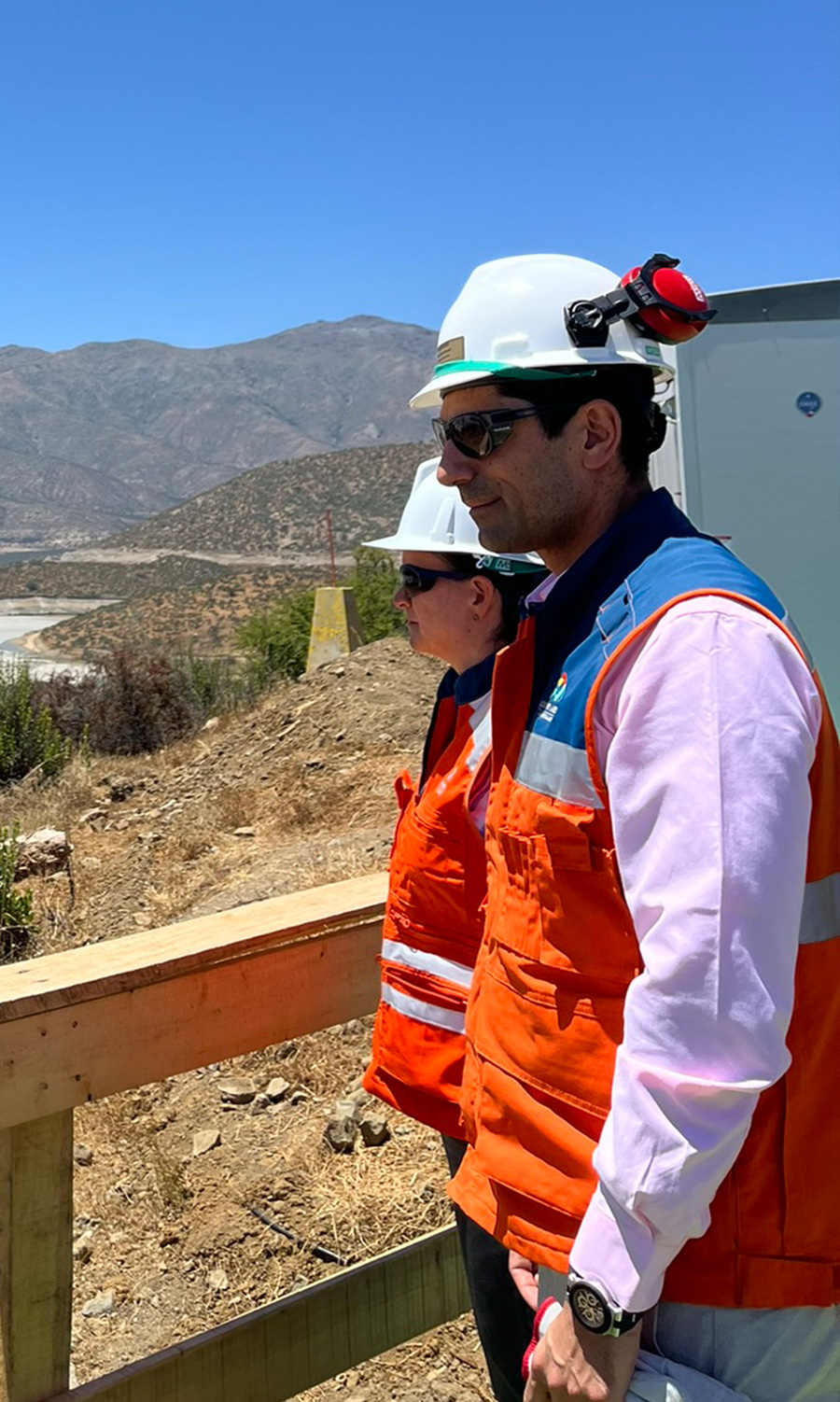
Introduction
Overview
Our sustainability report for 2024 begins with key statistics and leadership messages. Move through the chapters to discover more.
Read more
Chapter 1
We are Antofagasta Minerals
Antofagasta Minerals, part of Antofagasta plc, is an international mining company based in Chile and one of the world's ten largest copper producers.
Read more
Chapter 2
Governance
At Antofagasta, we strongly believe that a robust governance structure based on appropriate corporate policies and clear guidelines assures our sustainable performance in line with the best international practices and compliance.
Read more
Chapter 3
People and society
Our people are the essence of our achievements and the key to sustainable business. We have a long-term and responsible relationship with our suppliers, and contribute to social and economic development in the local communities in which we operate.
Read more
Chapter 4
Environment
We strive to produce in a sustainable way based on a long-term vision. We ensure that all our actions and activities prioritise preventing, controlling, and mitigating adverse environmental effects.
Read more
Chapter 5
Downloads /
Appendix
Find the full Sustainability Report 2024, PDFs from each chapter, and our Sustainability Databook 2024.
Read more
2024
Overview
Message from the Chief Executive Officer
Dear stakeholders,
I am pleased to present our Sustainability Report, which reflects our ongoing efforts and commitment to provide transparent and clear information about our performance and our purpose – developing mining for a better future. This report is our eighteenth annual standalone sustainability report, which is a demonstration of our long-held focus on reporting our progress in sustainability.
The world faces many societal challenges, and copper is a key enabler in helping to address them. These challenges involve well-established uses of copper, such as energy security and electrification, as well as emerging applications in technology, including AI, smart grids, and battery innovations. More copper is required to meet the demands of modern life.
Our stakeholder engagement is based on continuous dialogue with authorities, investors, lenders, technical entities, communities, and our workforce, enabling us to develop sustainable solutions to the challenges we face.
Chief Executive Officer
Antofagasta Minerals
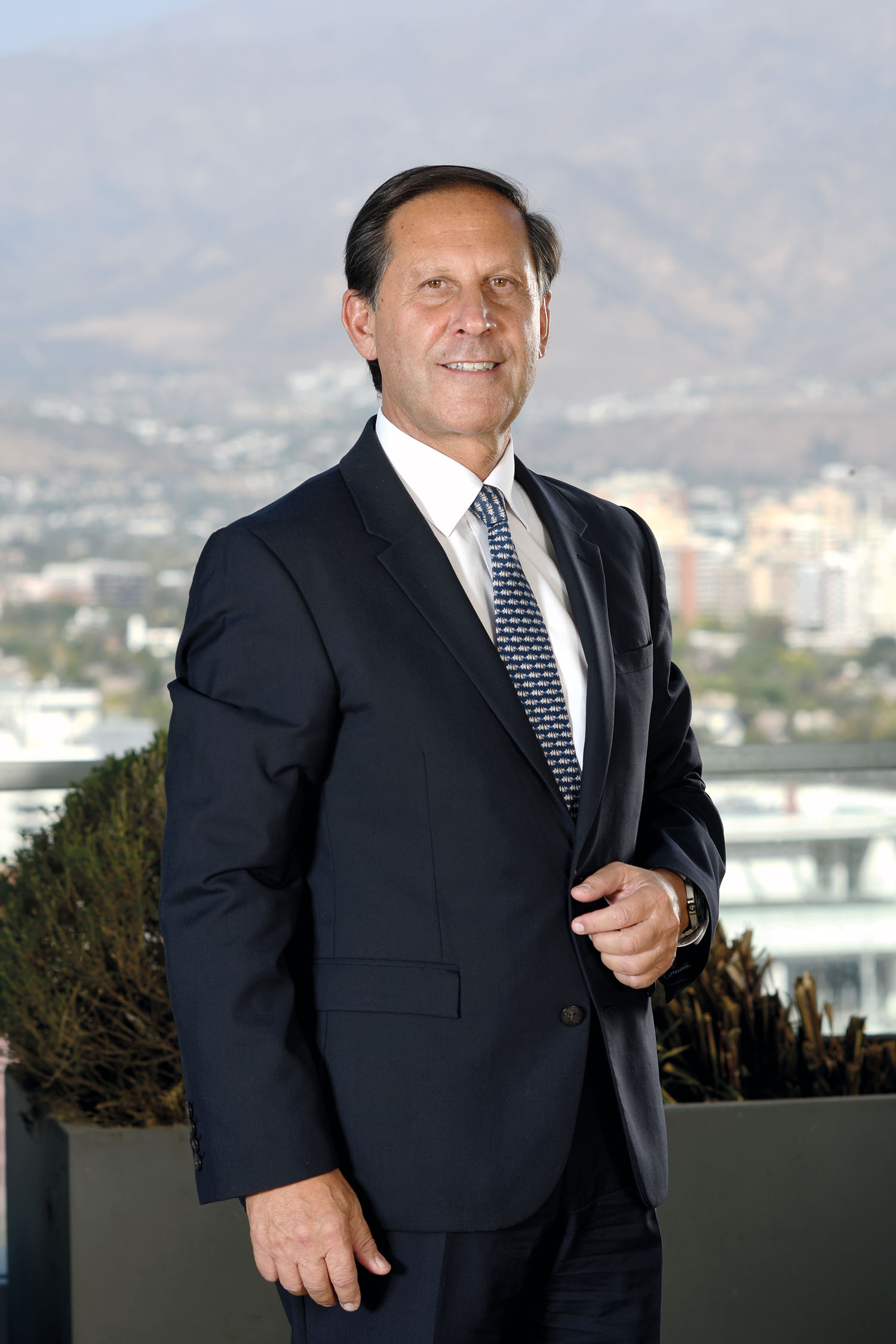
Message from the Chair of the Sustainability and Stakeholder Management Committee

Dear stakeholders,
I am very pleased to greet you for the first time as Chair of the Sustainability and Stakeholder Management Committee, a responsibility I take on with a strong commitment to Antofagasta Minerals and its stakeholders. The Committee plays a fundamental role in helping the Board to take into account the perspectives and interests of the Group’s stakeholders in its deliberations and provides objective oversight of the Group’s management of these matters within the Board’s governance arrangements.
Our strong all-round performance in 2024 included sustainability, with record safety performance, the inauguration of our new desalination plant for Los Pelambres, external awards for labour relations and therecertification of Zaldívar and Centinela under the new Copper Mark criteria, which recognises our responsible copper mining practices.
Our workforce is central to our business model, which considers health and safety, and wellbeing, as key to our success as a business. By the end of 2024, the Group recorded another fatality-free year and the lowest- ever lost time injury frequency rate, reinforcing our continual effort to improve safety practices across our organisation.
Chair
Sustainability and Stakeholder Management Committee
Highlights 2024
Organisation
Revenue
$6.4 bn
(2023: $6.1 bn)
EBITDA
$3.4 bn
(2023: $3.0 bn)
Copper produced
664 kt
(2023: 661 kt)
Gold produced
187 koz
(2023: 209 koz)
Silver produced
2.8 moz
(2023: 3.1 moz)
Molybdenum produced
10.7 kt
(2023: 11.0 kt)
Net cash costs
$1.64/lb
(2023: $1.61/lb)
People
28,063
total workforce
76%
contractors
27%
women employees
2.0%
people with disabilities
0
fatalities (2023: 0)
34.5%
reduction in high-potential incidents compared to 2023
Society
$658 m
Income tax, royalties and other payments to governments
46%
of local suppliers
$48 m
in social investment programmes
2nd
Human rights due diligence process completed
Planet
The Copper Mark
1st
mines to obtain recertification under the new 33 criteria framework (Centinela and Zaldívar).
Update
of the Environmental management model
83%
water use was recirculated
27,808
hectares of protected area in the Choapa Valley (Coquimbo Region)
Double Materiality Matrix
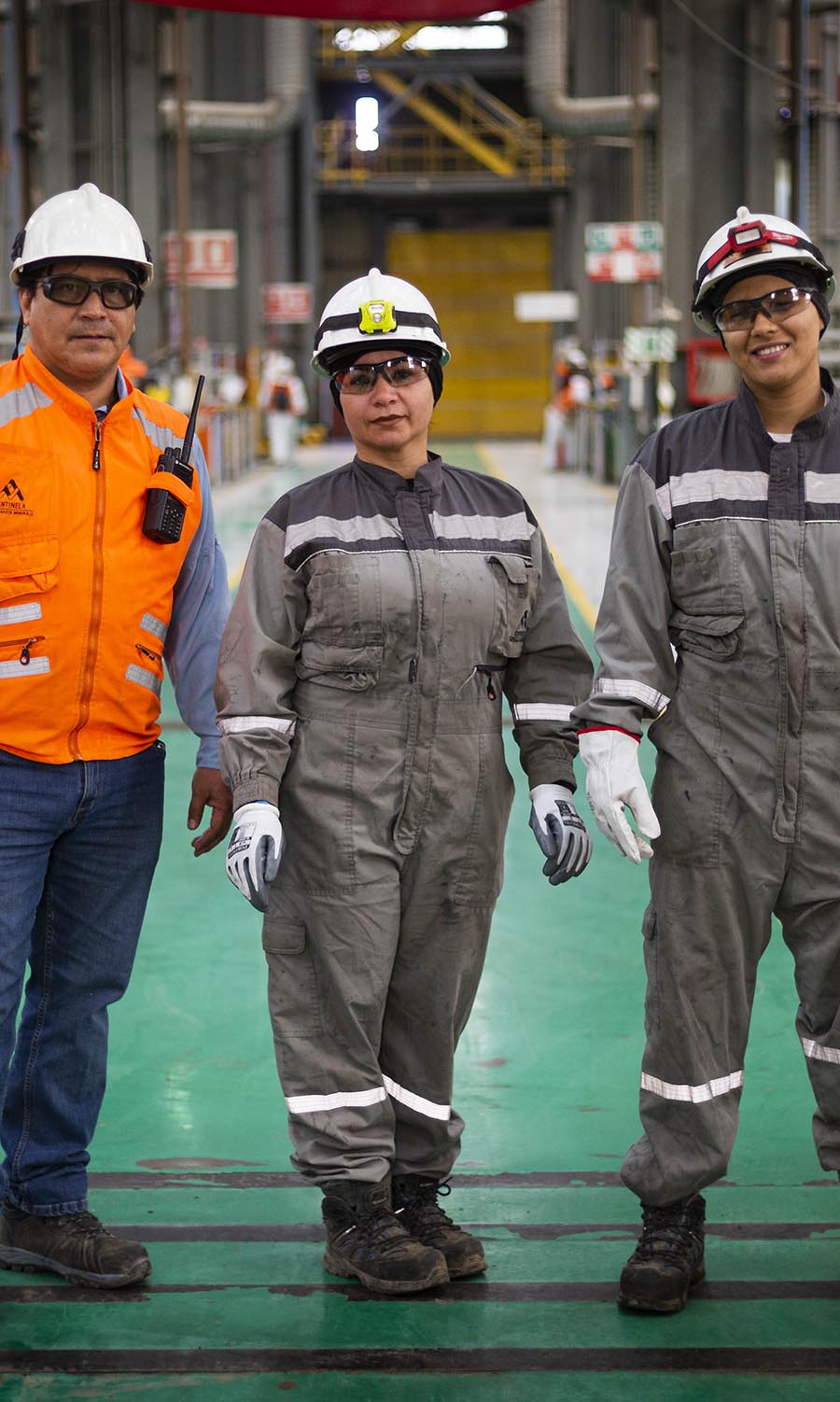
Chapter 1
We are Antofagasta Minerals
Our purpose
Developing mining for a better future
How we deliver our purpose
In order to deliver a better future, we need a robust strategy. Our five strategic pillars are the key areas we focus on as a business, driving us onwards to achieve our purpose.
Our vision is to be an international mining company focused on copper and its by-products, which is also known for its operating efficiency, creating sustainable value, high profitability, and being a preferred partner in the global mining industry.
Why we want to achieve our purpose
Planet
Our vision of a better future reflects the quest for a more sustainable planet, with copper playing a central role in global energy security and electrification, economic progress and improved livelihoods around the world.
Society
Our vision of a better future is one that is developed together with local communities, aiming for a society that recognises the economic and social value generated by mining.
Organisation
To tackle the challenges that we face in our daily operations and growth, we need a robust organisation that consistently meets these challenges and is grounded in clear and unshakeable values and principles.
Our vision of a better future therefore encompasses our ethical organisational behaviour and continuous pursuit of a sustainable culture of trust, inclusivity, collaboration, agility and willingness to embrace change and continuous learning.
People
Our success relies on having the best people at the heart of everything we do. Our vision of a better future would be incomplete without the shared values of our workforce: a diverse and inclusive group of individuals open to learning and to enjoying personal and professional growth, who strive for excellence in their results.
How we will achieve our purpose
Through our five strategic pillars
Safety and Sustainability
to enhance our current operations, while aiming for future-proof our business model.
People and culture
to cultivate the talent necessary for a better future.
Competitiveness
to achieve excellence and create long-term value.
Innovation
to constantly push back boundaries and explore new ways of advancing.
Growth
to keep contributing to the development of a better future.
Underpinned by our values

Respect for others
We respect people and care about their opinions, which is why we engage in an open, transparent and collaborative way. We trust them and have a genuine interest in their wellbeing.

Responsibility for safety and health
We are responsible for our own health and safety, as well as for that of others. We identify and control our risks, and we are aware of the impacts of our actions.

Committed to sustainability
We operate responsibly and efficiently, with long-term vision. We maximise the economic value of our assets, contribute to social development and minimise our environmental impacts.

Excellence in our performance
We continually seek to achieve the best possible results through operational discipline. We look after our resources, and we build trust by fulfilling our commitments.

Innovation as a permanent practice
We recognise and promote new ideas that improve our work practices and the way we relate to others. We aim to create value for the organisation, stakeholders and the environment.

Forward thinking
Our business strategy aims to generate value with a long-term vision for shareholders and other stakeholders. We learn from our mistakes and have the flexibility and courage to face new challenges.
Sustainability Policy
Our purpose at Antofagasta Minerals is to develop mining for a better future, with sustainability an integral part of our business model and playing a key role within several of our strategic pillars. We aim to achieve a positive long-term impact on society based on our values, corporate policies, and standards, while reviewing risks and opportunities that could affect our business. The Board is responsible for analysing, leading, and monitoring the sustainability policies and best practices.
Explore our Sustainability Policy
Hover on a section of the graph below to find out more.
People
A safe and healthy environment is a priority for our work, as is wellbeing. We recognise the importance of diversity and equal opportunities, so we continually strive to create proper environments that promote integration and both professional and personal development.
Sustainable economic performance
We are constantly seeking sustainable ways to improve our operational efficiency, in order to create value for our stakeholders. We operate responsibly and with long-term vision, to maximise the economic value of our assets and contribute to social development.
Environmental management
We work to prevent, control, and mitigate our potential environmental impacts. We seek always to make efficient use of natural resources. We implement integrated environmental management systems into our business, establishing objectives, goals, and indicators. We strive for continuous improvement, regularly evaluating our environmental performance to tackle the most critical challenges associated with the management of water resources, air quality, biodiversity, waste, heritage culture, land use, climate change, and energy.
Social development
We seek to contribute to the generation of economic, social and human capital in the environments in which we operate. We lead processes of effective, participatory and transparent dialogue, with the different actors in the territory, acknowledging challenges and opportunities to address them together.
Transparency and corporate governance
We believe in the importance of developing effective, responsible and transparent institutions. Our guidelines and internal regulations establish our commitment to run a responsible business. We operate with integrity based on transparency and respect for human rights and the law. We openly communicate our performance and implement systems that allow us to supervise our procedures internally. Additionally, we have systems for the control and management of the minerals used in the manufacturing of the products we deliver to our clients, in accordance with the OECD due diligence standards on the origin of minerals and responsible sourcing principles.
What we do
Antofagasta Minerals, part of Antofagasta plc, is an international mining company based in Chile and one of the world's ten largest copper producers. We operate four open-pit copper mines in the country: Los Pelambres, Centinela, Antucoya, and Zaldívar. We supply copper concentrate and cathode products to various global markets, with approximately 75% of our production destined for the Asia-Pacific region. China remains the largest consumer, according to projections from the Chilean Copper Commission (COCHILCO).
Our operations are located in the central and northern regions of Chile.
- Los Pelambres is our largest operation, producing 319.6k tonnes of copper in 2024, in addition to by-products of molybdenum, gold and silver, and has a workforce of 7,711 people. Located in the Choapa Province (Coquimbo Region), in 2024 we celebrated 10 years of engagement through Somos Choapa, our flagship community engagement programme.
- Centinela is our second largest operation by volume, located in the Antofagasta Region of northern Chile, producing 223.8k tonnes of copper in 2024, in addition to by-products of molybdenum, gold and silver, with a workforce of 8,992 people.
- Antucoya with a workforce of 2,479 and Zaldívar with a workforce of 2,883, are two solvent extraction and electrowinning operations in the Antofagasta Region of Chile, producing 80.4k and 40.1k tonnes of copper in 2024 respectively. In the Antofagasta Region, community efforts in 2024 focused on developing initiatives chosen by residents as part of the community engagement programme “Diálogos para el Desarrollo”, as well as joint work with the Indigenous peoples of the Salar de Atacama, centred educational programmes and cultural heritage preservation.
Markets served (by value)
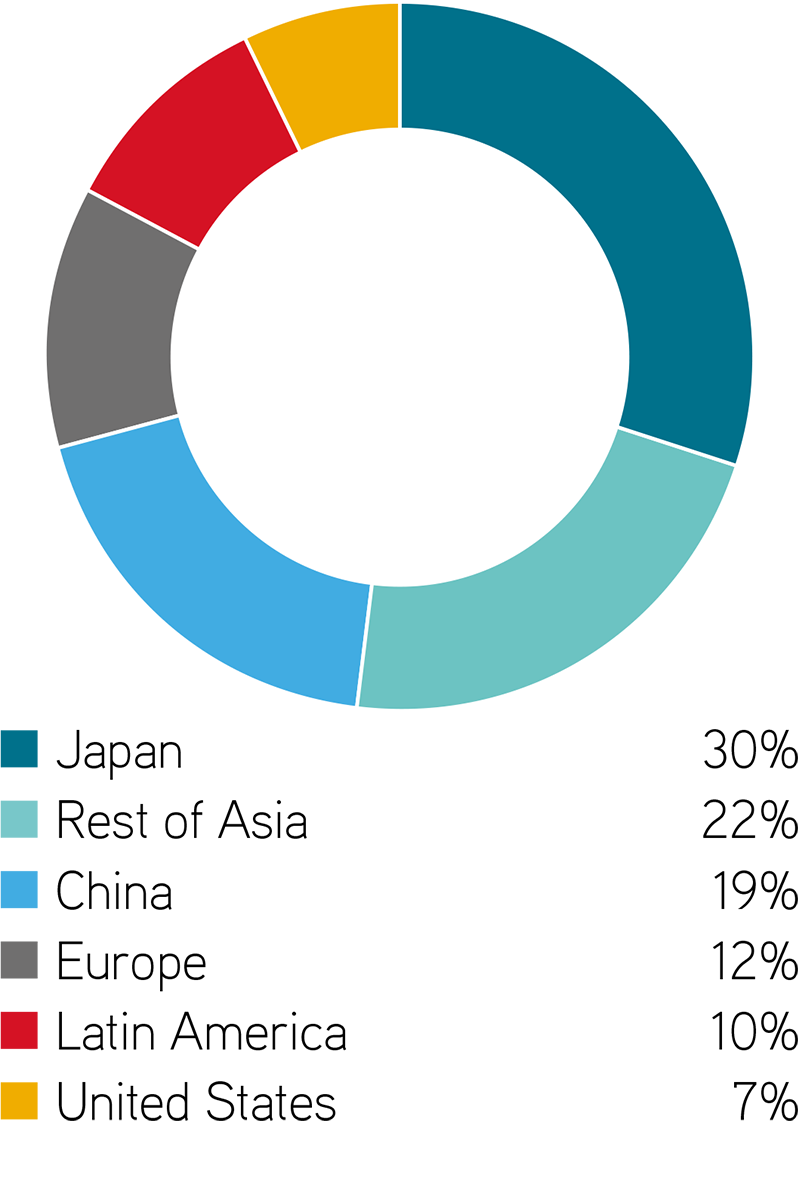
Ownership chart
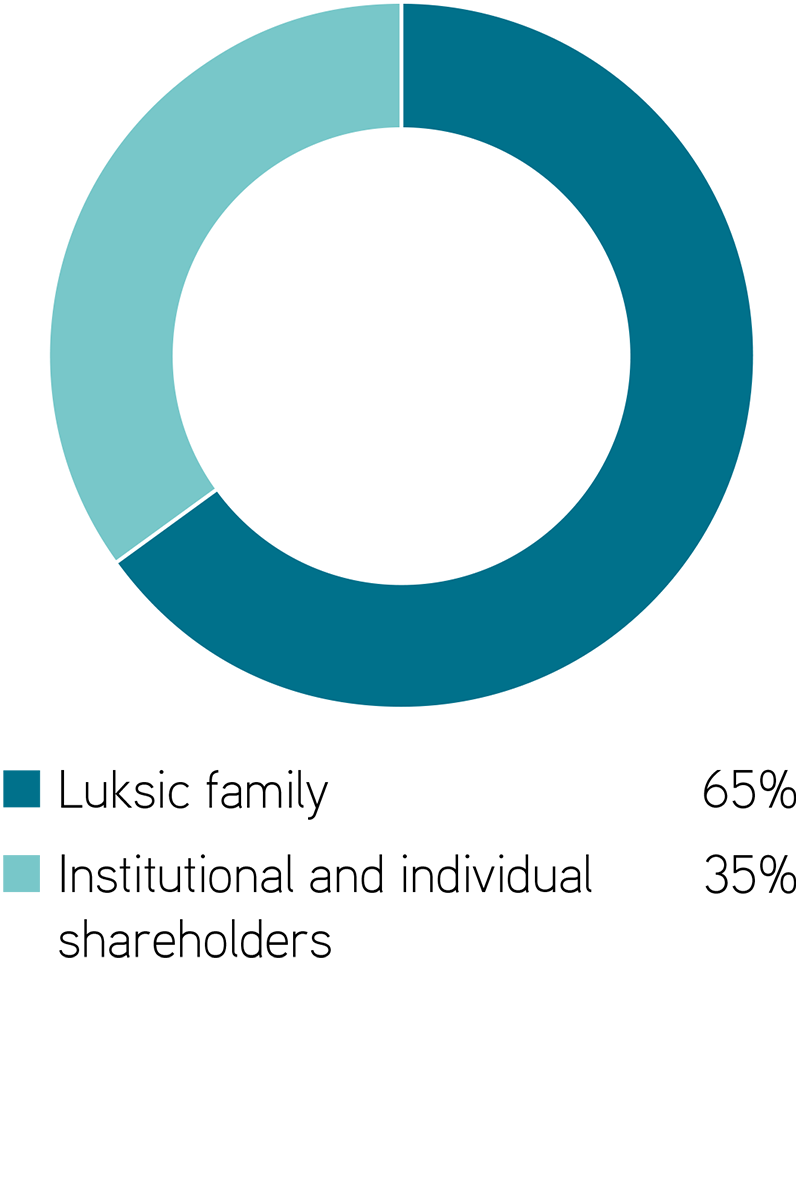

Antucoya’s anniversary
Centinela’s anniversary
Los Pelambres’ anniversary
Zaldívar’s anniversary
Innovation
We incorporate cutting-edge modern technology into our existing operations and new projects, to improve our efficiency and competitiveness. We distinguish between initiatives addressing daily operational challenges and those driving long-term transformation, exploring new mining methods.
Our open platform, InnovaMinerals, presents our main operational challenges, inviting employees, contractors, and external parties to propose ideas and solutions.
In 2024, Antofagasta Minerals, in collaboration with MIT, held the seminar ‘Disruptive Innovation for the Future of Mining’ addressing key topics like electrification and energy security, which imply increased demand for minerals, especially copper. Over 220 attendees participated, along with a sizeable streaming audience.
During 2024, we have continued to develop a series of initiatives, further increasing and optimising our use of technology throughout our business:
- Cuprochlor-T, a proprietary and patented technology
- Daily Plan Optimiser (SIRO Mezcla) generates optimal extraction scenarios through balancing equipment availability, tonnage and ore quality.
- Technologies for Competitiveness in Los Pelambres
- Shovel maintenance to improve productivity, as well as additional safety benefits
- GPT Aminerals with Generative Artificial Intelligence (GenAI)
- Operational Excellence Management System (OEMS) in Antucoya to reduce downtime in mobile mining equipment relating to tyre failure.
- Hopper Lining Project reduces wear and downtime related to maintenance.
- Tailings Innovation Programme provides alternatives to conventional tailings
Internally developed initiatives awarded by the Group in 2024
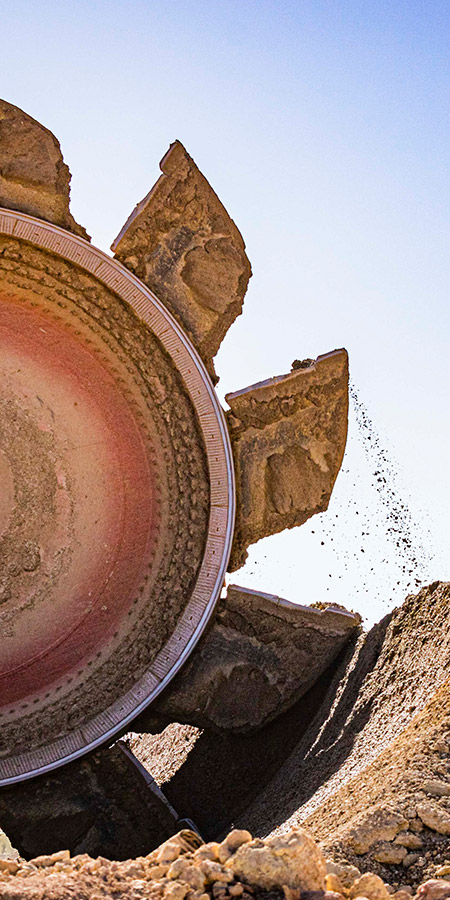
Ionoguard – Minimising scintillation shutdowns – Antucoya: Ionoguard is a technology designed to mitigate the effects of ionospheric scintillation on GPS systems, ensuring the continuous operation of the bucket wheeled excavator. Its implementation included firmware updates, installation of Trimble R750 equipment, and the continuous analysis of solar projections to adapt the system to changing conditions.
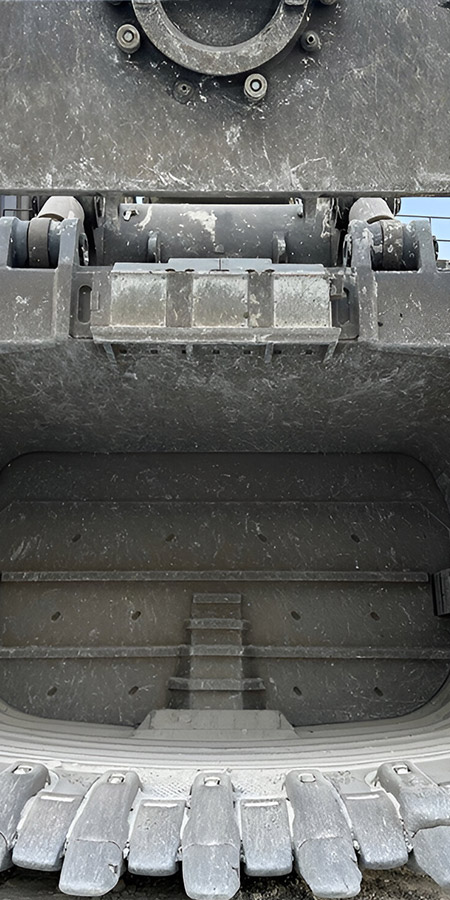
ShovelSense – Centinela: cutting-edge technological solution designed for real-time monitoring of the quality of ore being loaded by mining shovels. Utilising high-precision sensors and advanced analytical algorithms, ShovelSense determines material composition directly at the mine face, delivering critical data on ore grade and other essential parameters in real time through integration with the mine Fleet Management System (FMS). This innovation has significantly improved the efficiency of ore dispatch to processing plants, enhancing selectivity, improving ore recovery and preventing waste material from entering the ore stream.

Mineral Tracking – Zaldívar: a centralised system where a set of data is stored and managed, allowing efficient access, search, retrieval and applications. Its objective is to trace the mineral throughout the entire value chain, promoting data-driven operational decision-making thus meeting the objectives of maximising copper stacking and/or recovery.
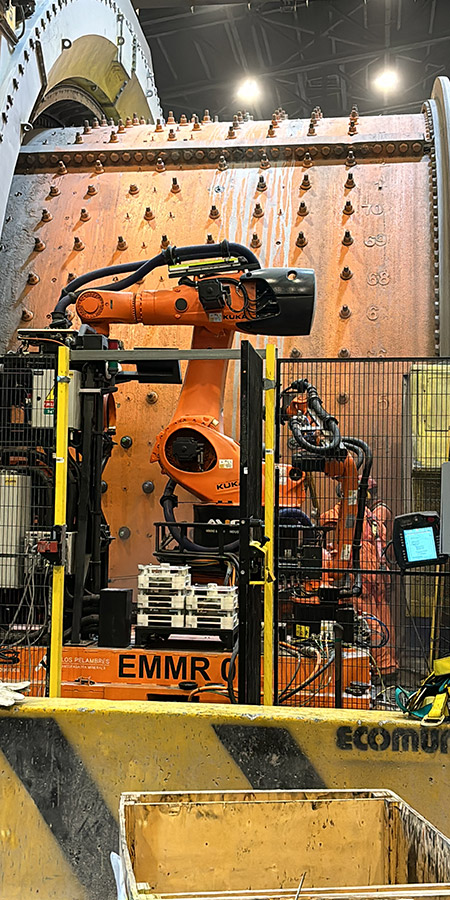
Robotic Arms – Los Pelambres: Los Pelambres: implemented these devices in its operations, an initiative that promises to reduce exposure to safety risks and seeks to reduce the time required to change bolts and lining plates in semi-autogenous (SAG) mills by 30%. The initiative improves task efficiency and increases safety by removing workers from risky tasks and adverse environments. The robotic arm combines sensors, actuators and a processing unit, for safe and precise interaction with the environment.
Working through our value chain to shape tomorrow
Mining is a long-term business that can significantly influence neighbouring communities and territories. We aim to achieve a sustainable value chain, responsibly managing our employees, contractors, suppliers, local communities, the environment, customers and financial investors.
Our stakeholders
Our people
Communities
Suppliers
Customers
Financial Shareholders
Governments and regulators
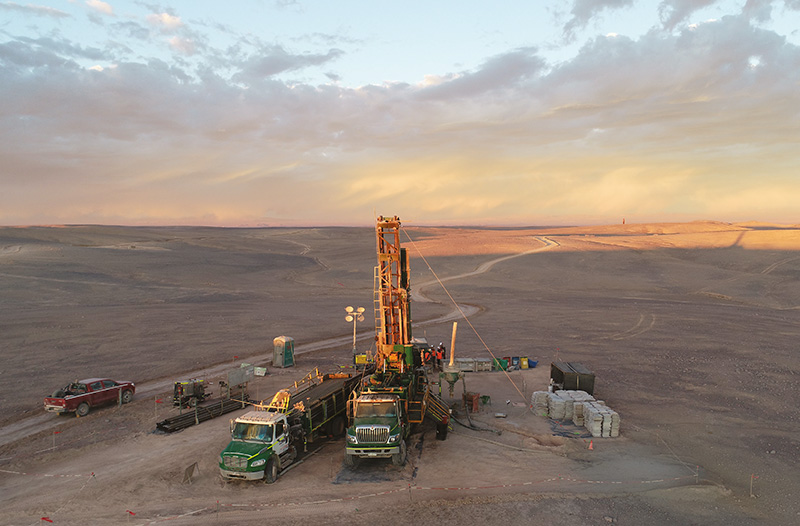
Exploration / Investments
At Antofagasta Minerals, we conduct exploration activities to replace mineral resources mined during the year and to provide a platform for long-term growth by developing a pipeline of organic growth options. Our strategy focuses on a mix of near-mine exploration, greenfield projects, and opportunities with third parties in the Americas, particularly in Chile, Peru, the United States, and Canada.
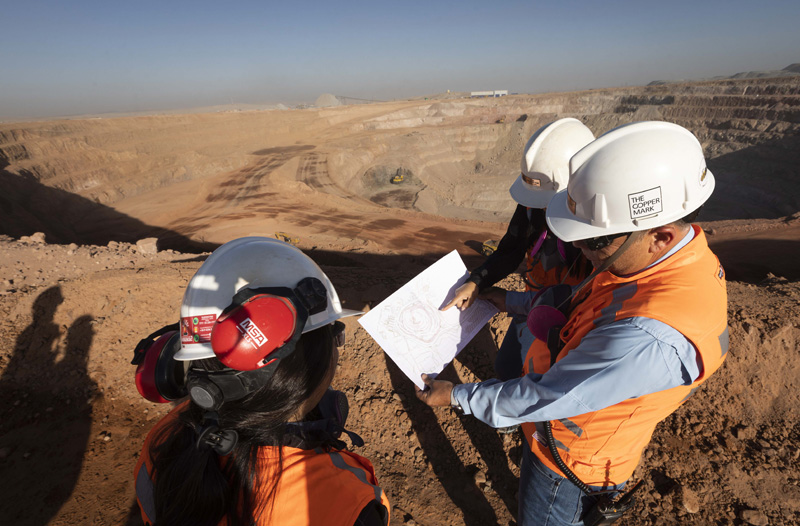
Evaluation
Our design and evaluation process integrates innovative solutions and various economic, social, and environmental criteria. This approach allows us to design more sustainable mine construction and operation plans, maximising value and ensuring meaningful citizen participation.
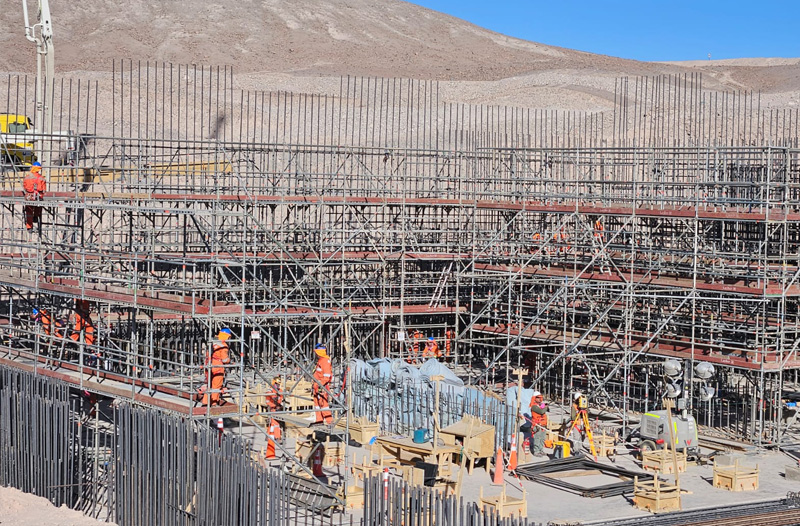
Construction
The construction phase of a mining project begins once all environmental and sectoral permits and relevant authorisations from state entities have been obtained.
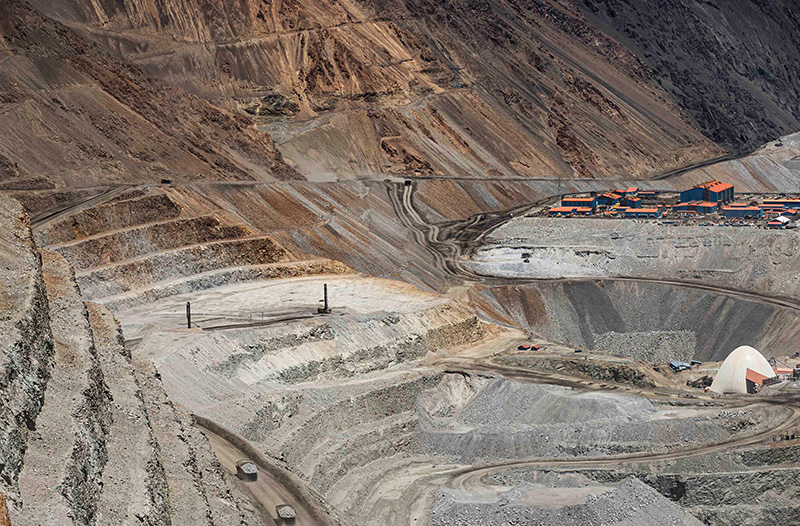
Extraction and processing
Health and safety, operating efficiency and innovation are key elements of our operations. At Antofagasta Minerals, we mine both sulphide and oxide ores, each of which requires different processing techniques:
Sulphide ores: extracted at Los Pelambres and Centinela, it is milled and transferred to flotation cells, where it is upgraded to a concentrate containing 25–35% copper.
Oxide ores: mined at Centinela, Antucoya and Zaldívar. This material is combined with leachable sulphide ore, crushed and added to a leach pad before sulphuric acid is applied to produce a solution containing copper. The final stages of processing are solvent extraction and electrowinning (SX-EW), which enable these operations to produce copper cathodes.
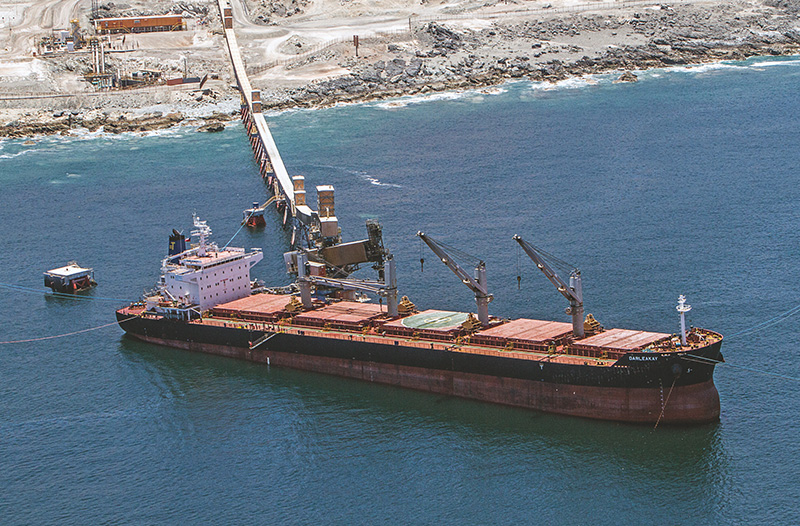
Sales and marketing
We have built long-term relationships with smelters and manufacturers, with approximately 75% of our output (by value) going to Asian markets. Copper concentrate is sold to international smelters for conversion into copper metal. Gold and silver byproducts are marketed for industrial, electronic, and jewellery uses. Molybdenum is used to produce steel alloys, while copper cathodes are sold to manufacturers worldwide.
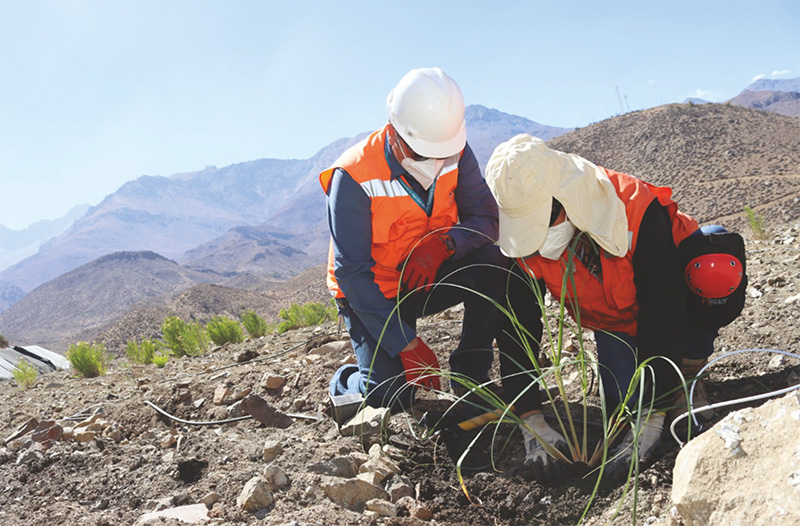
Mine closure and rehabilitation
Mine lifecycle planning includes a site closure and rehabilitation plan, following international standards and national regulations. As required by Chilean law, all our operations have closure plans approved by the National Geology and Mining Service (SERNAGEOMIN), and we have an Integrated Mine closure standard that establishes the procedures to follow.
Engaging and understanding our stakeholders
Our business strategy aims to generate long-term value for shareholders and stakeholders. We identify and listen to our stakeholders, understand their expectations, and engage in continuous, open, collaborative, and transparent relationships. We develop robust, long-term connections through mechanisms that foster proximity and constant dialogue with the key groups involved in our activities.
Our People
Who they are
Over 28,000 employees, permanent contractors and temporary contractors related to projects. The majority are based in Chile and work across our operations, projects, exploration programmes, and corporate offices.
Why we engage
Constructive relationships, grounded in mutual respect and transparency, are crucial for a good working environment and talent retention, as well as for productivity and efficiency.
How we engage
- Site visits by Board and senior management
- On-site reviews
- Engagement surveys, pulse, psycho-occupational risk surveys, opinions on activities carried out, among others.
- Individual performance appraisal
- Regular meetings with union representatives
- Regular meetings with contractor managers
- Intranet, internal communication screens, announcements, among others
Communities
Who they are
Over 50 communities located in 10 communes around our mines, as well as on the coast close to our port and desalination facilities in the Antofagasta and Coquimbo regions.
Why we engage
The wellbeing of our neighbours is directly related to the sustainable development and success of our business. Our bottom-up engagement approach aims to create shared value. We are focused on preventing, mitigating and offsetting any adverse impacts our activities may have.
How we engage
- Social programmes
- Partnerships with local organisations
- Working groups on specific areas of community development or concerns
- Tools to measure net positive impact generated by social investment
- Community Grievance Management System to address grievances submitted by our neighbouring communities.
Suppliers
Who they are
We work with over 3,900 suppliers of which 94% are based in Chile. They provide a wide variety of products and services, ranging from large mining equipment to catering and transport services. They are vital to our ability to operate continuously, safely and efficiently.
Why we engage
Suppliers play a crucial role in our ability to operate sustainably and safely. They represent a driving force for the continuous improvement of our products. We collaborate with them to enhance their sustainability performance and ensure they meet our standards and guidelines through best practices.
How we engage
- Regular meetings between the procurement team and suppliers
- Online tender platform to guarantee fairness and transparency
- Automated invitation system and several external tender platforms
- Ongoing engagement with industry associations, such as the Antofagasta Industrial Association (AIA), Association of Industrial Mining Suppliers (APRIMIN), among others
- Participation in key events such as The Electric Mine, MinExpo (USA), Expomin, Exponor.
Customers
Who they are
Our customers are located in various jurisdictions around the world and we supply mainly to the Asia-Pacific markets.
Most sales are made under long-term framework agreements or annual contracts, with sales volumes agreed for the following year.
Why we engage
Interaction and engagement with our customers gives us greater certainty about product prices and volumes. In parallel, strengthening this relationship allows us to identify and ensure customer satisfaction regarding their different needs.
How we engage
- Regular contact with customers around the world.
- Frequent contact with our partners in our mining operations.
- Yearly visits to Japan by our Chairman and several Directors to meet some of our partners.
- Marketing office in Shanghai.
Financial investors
Who they are
Financial investors are entities that are either shareholders of Antofagasta plc, which is listed on the London Stock Exchange, or are investors in the Company's bond instruments. This category also includes capital providers, sell-side analysts and other market participants.
Why we engage
We maintain fluent and transparent dialogue with our financial investors to ensure that they are treated fairly and receive all relevant information.
They evaluate their holdings in the Company, so they require regular information on policies, projects and performance. We constantly deliver complete and relevant information, keeping them informed in a timely manner.
How we engage
Regular meetings with institutional investors and broker analysts at:
- Industry conferences
- Roadshows
- One-on-one meetings
- Annual General Meeting
- Regular delivery of financial reports and relevant information.
Governments and regulators
Who they are
National, regional and local governments and regulators that define the framework within which we operate and that periodically supervise our daily actions.
Why we engage
Mining is a long-term business, and its activities can extend over decades. Policies, legislation and regulations can have a major impact on our business; therefore we engage with decision-makers to identify any changing situations that may impact our operations
How we engage
- Close contact with mining associations and other industry-related entities to engage with governments on public policy, legislation, regulations and procedures relevant to our business
- Interaction with governments and regulators within their engagement mechanisms (defined in the Chilean Lobbying Law) and our own standards on Relationships with Public Officials and Politically Exposed Persons
Partnerships and Awards
Largest industry association contributions and expenditures
In 2024 we made three significant contributions:
- ICA: $1,994,921
- ICMM: $272,271
- Chilean Mining Council: $166,545
Collaborative solutions to shared challenges
Our adherence to ICMM principles
Antofagasta Minerals is a member of the ICMM, an international organisation founded in 2001 that promotes sustainable mining and develops standards through its ten Mining Principles.
The Copper Mark
The Copper Mark is an independent assurance framework of responsible mining practices in the copper mining industry, developed by the International Copper Alliance (ICA).
Alta Ley Corporation
Alta Ley is an organisation that aims to articulate the existing capacities of public and private entities and organisations in the national mining industry. It promotes and fosters the sector's development and improves mining's competitiveness and sustainability. To date, we have actively participated in two of the organisation’s initiatives:
- Mining Cyber Security Corporation (CCMIN)
- Scope 3 Emissions Traceability Working Group
Distinctions 2024
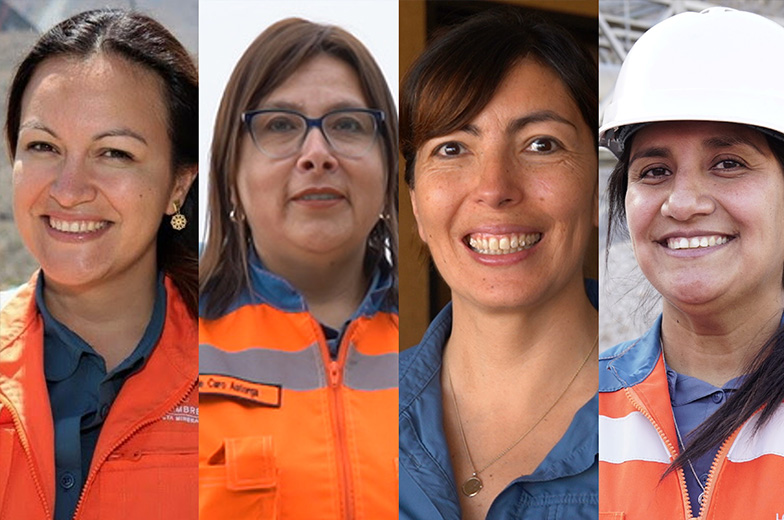
100 Inspiring Women in Mining Chile & 100 Leading Women 2024
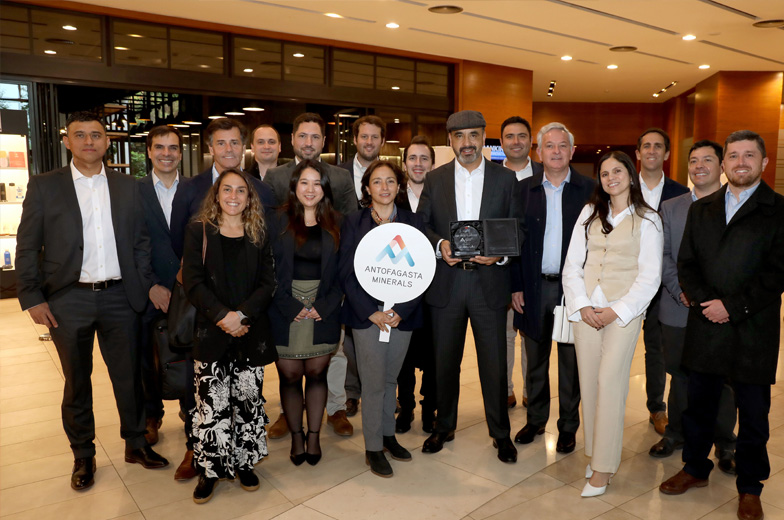
Most Innovative Company
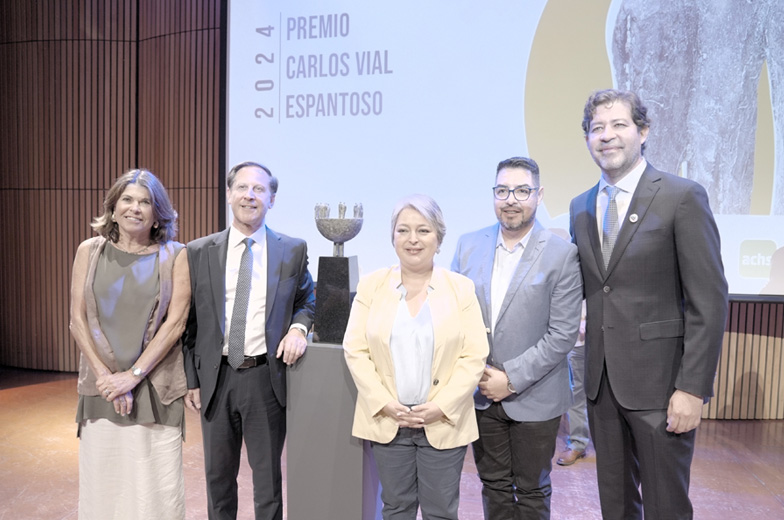
Carlos Vial Espantoso Award 2024
Policy Influence
The Company is an active member of the International Council on Mining and Metals (ICMM), which explicitly supports the goals of the Paris Agreement and the Sustainable Development Goals (For more information see ICMM’ s website “Position Statement: Climate Change”).
In 2024, Antofagasta strengthened its governance framework by publishing the Directive on Engagement with Public Officials (FP) and Politically Exposed Persons (PEP). This internal guidance document sets clear standards and good practices that must be followed by directors, executives, supervisors, and employees when interacting with public authorities, ensuring full alignment with transparency, ethical conduct, and corporate integrity principles. These guidelines support the Company’s commitment to responsible and Paris-aligned public engagement. See more.
Download full PDF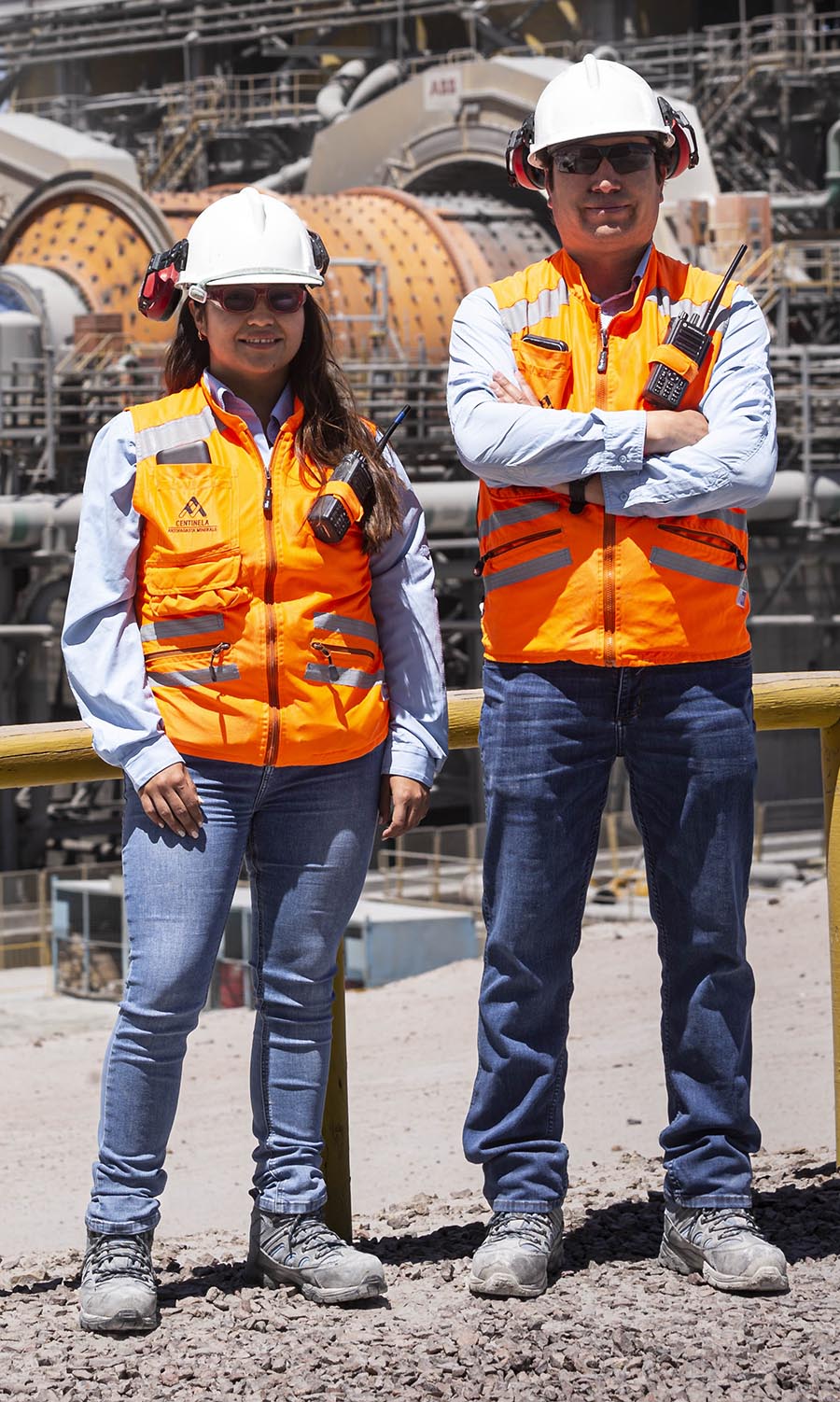
Chapter 2
Governance
Sustainability Governance
Our Company’s governance structure is designed to effectively oversee and promote sustainability related policies and practices throughout our operations. The Board is responsible for analysing, leading, and monitoring these policies and practices. Our approach to governance ensures robust oversight, strategic alignment, and proactive risk management to promote transparency, long-term resilience, and value creation.
6 out of 11
members of the Antofagasta plc Board of Directors are independent.
64%
of the Antofagasta plc Board members state they have sustainability skills. This includes competence on climate-related issues.
45%
of Antofagasta plc Board members are women.
Zero
formal complaints related to Law on economic and environmental crimes were received.
Zero
incidents of violations involving Indigenous peoples’ rights in 2024.

Sustainability and Stakeholder Management Committee
The Sustainability and Stakeholder Management Committee supports the Board by providing guidance on the Group’s safety, health, environmental and social responsibility strategies and policies, overseeing the corresponding programmes, and making recommendations to the Board to ensure that the views and interests of the Group’s stakeholders are considered in the Board’s deliberations.
| Sustainability and Stakeholder Management Committee 2024 | |
Eugenia Parot1 |
The CEO, COO, Vice President of Corporate Affairs, Vice President of Sustainability, and the Company Secretary periodically attend the meetings, as do other directors who are not members. The Committee meets whenever necessary and at least twice a year. In 2024, the Committee met six times to assess the organisation’s priorities. |
Michael Anglin, Vivianne Blanlot2, Juan Claro, Ramón Jara, and Tracey Kerr |
|
1. Eugenia Parot was appointed Chair of the Committee with effect from 1 January 2025.
2. Vivianne Blanlot resigned from the Board with effect from 31 March 2025.
Creation of the Vice Presidency of Sustainability
There have been significant advances in our organisational approach to sustainability. In 2024, the Vice Presidency of Corporate Affairs and Sustainability was split, creating the new Vice Presidency of Sustainability.
This division now oversees the Environment, Occupational Health and Safety, and Sustainability Performance departments. Additionally, Sustainability Management areas were created within the Vice Presidencies of Projects and Development, Explorations, and New Businesses to improve the integration of sustainability into all mining lifecycles.
 Download full PDF
Download full PDFResponsible Leadership
Supported by our guidelines, our Ethics Code and internal policies, we run our business in an accountable manner. We strive to make progress with integrity, respecting human rights and regulations, openly communicating our performance with a focus on our stakeholders, and constantly supervising our procedures.
Complaints Channel Tu Voz
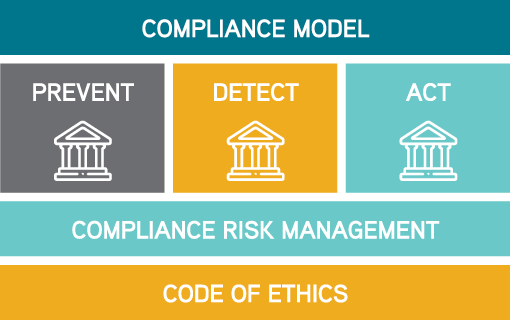
Tu Voz channel complaints received in 2024

Community Grievances received in 2024
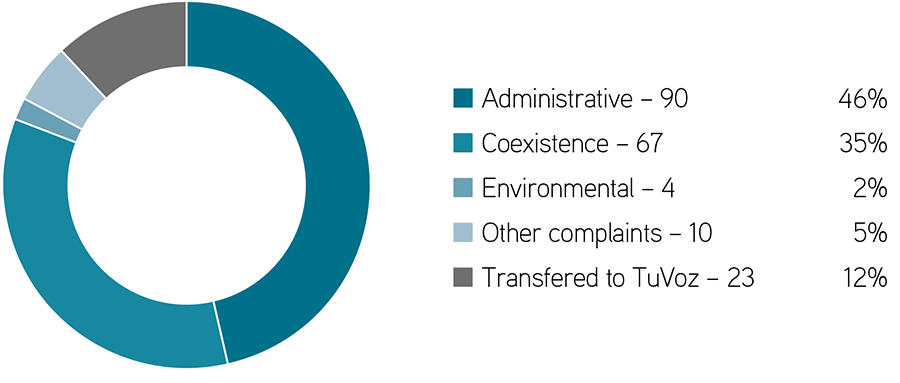
Human Rights
Antofagasta plc recognises the dignity of human beings as a fundamental value, whether in the context of our business or outside of it. Acknowledging and respecting human rights implies acting within a framework of equality, equity and non-discrimination.
Our commitment to respecting human rights is declared in our Human Rights Policy, which was formalised in 2020. This policy aligns with the UN Guiding Principles on Business and Human Rights, the Global Compact’s Fundamental Principles, and the ICMM Mining Principles on Human Rights.
In 2022, we updated this policy to recognise Indigenous peoples’ rights and align our security practices with the Voluntary Principles on Security and Human Rights (VPSHR). The policy, applicable to all Group companies, respects and protects Indigenous peoples’ rights, culture, and traditions, especially those near our operations.
We do not tolerate violations of our policy by employees, contractors, or supply chain companies. We prevent and reject exploitation, slavery, and human trafficking in our operations and supply chain. We do not tolerate child, forced, or slave labour. In compliance with the UK Modern Slavery Act 2015, we publish an annual statement on measures taken to prevent slavery and human trafficking.
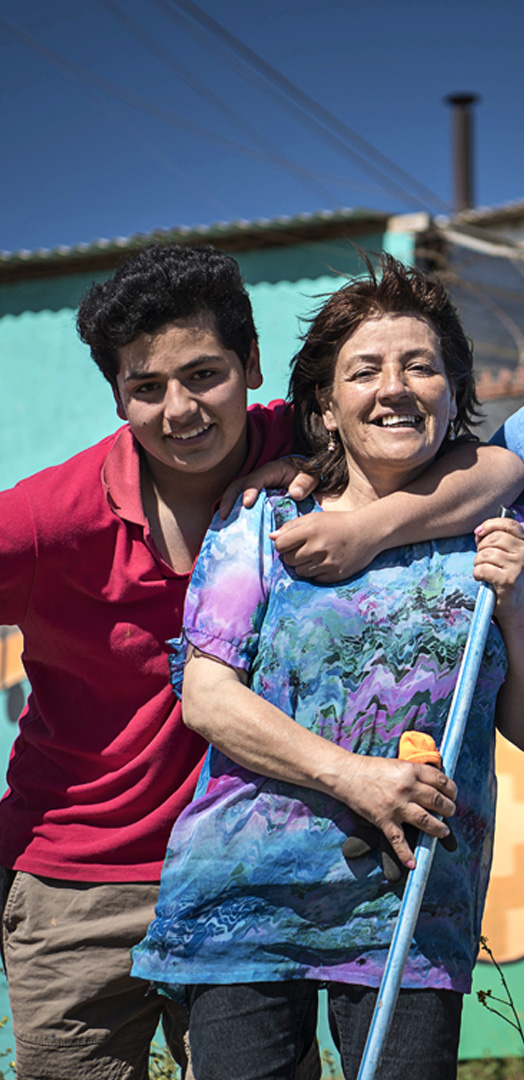
Human Rights Due Diligence Process
In 2024, we conducted our second human rights due diligence process across our four mining companies and projects to evaluate the potential risks identified in our first process and establish new action plans. This exercise is crucial for understanding and anticipating the industry’s potential impacts on communities, employees, and contractors. It allows us to design preventive action plans to mitigate any negative consequences related to community and indigenous relations, labour rights, work-life balance, water management, and dust release.
The following categories were assessed:
- Labour practices: Fair conditions, non-discrimination, wages, privacy, freedom of association, safety
- Supply Chain: Fair conditions, non-discrimination, wages, privacy, freedom of association, safety
- Environmental impact: Water, air, noise, public health, sustainable environment
- Safety: Protecting life, liberty, and security
- Economic, social, and cultural impacts: Adequate living standards
- Indigenous peoples: Consent, cultural identity, resource management
- Cumulative impacts: Public health, water access
- Access to remedy mechanisms: Effective remediation
- Tailings and waste management: Health, safety, water, environment
- Bribery and corruption.
Actual or potential human rights issues covered/identified:
- Forced labour
- Human trafficking
- Child labour
- Freedom of association
- Right to collective bargaining
- Equal remuneration
- Discrimination
Groups at risk of human rights issues covered/identified:
- Own employees
- Women
- Children
- Indigenous people
- Migrant workers
- Third-party employees
- Local communities
Human Rights Assessment
| Category | A. % of total assessed in last three years | B. % of total assessed (column A) where risks have been identified | C. % of risk (column B) with mitigation actions taken |
| Own operations (including joint ventures where the company has management control) As a % of the revenue | 97 | 100 | 100 |
| Contractors and Tier I suppliers (as a % of contractors or Tier I suppliers) | 100 | 100 | 100 |
| Joint ventures (including stakes above 10%) (as a % of joint ventures) | Not applicable | Not applicable | Not applicable |
Interactions with Public Security
The Company’s Human Rights Policy, updated in 2022, explicitly aligns with the VPSHR and includes provisions for respectful engagement with public security forces. It ensures that any collaboration with public authorities respects human rights and cultural heritage, especially in Indigenous territories.
Interactions with Private Security
Security personnel, including private contractors, receive training on human rights and the Company’s Code of Ethics. Antofagasta Minerals requires all contractors to comply with its human rights standards, and security practices are aligned with the Voluntary Principles.
Monitoring of Security Providers
The Company has implemented internal procedures to monitor compliance with its Human Rights Policy and Code of Ethics. This includes oversight of private security providers to ensure alignment with expected conduct and respect for human rights.
Audit and Assessment of Security Contractors
The Company’s compliance model includes regular internal audits and third-party reviews. Security-related risks are assessed as part of broader human rights due diligence and compliance monitoring. Contractors are subject to performance evaluations and must adhere to contractual clauses on ethics and human rights.
Risk Management
Effective corporate risk management is fundamental to accomplishing our purpose and executing our strategy. By understanding, prioritising and managing risk, we protect our people, assets, values, reputation and the environment, and identify opportunities to better serve the long-term interests of all our stakeholders.
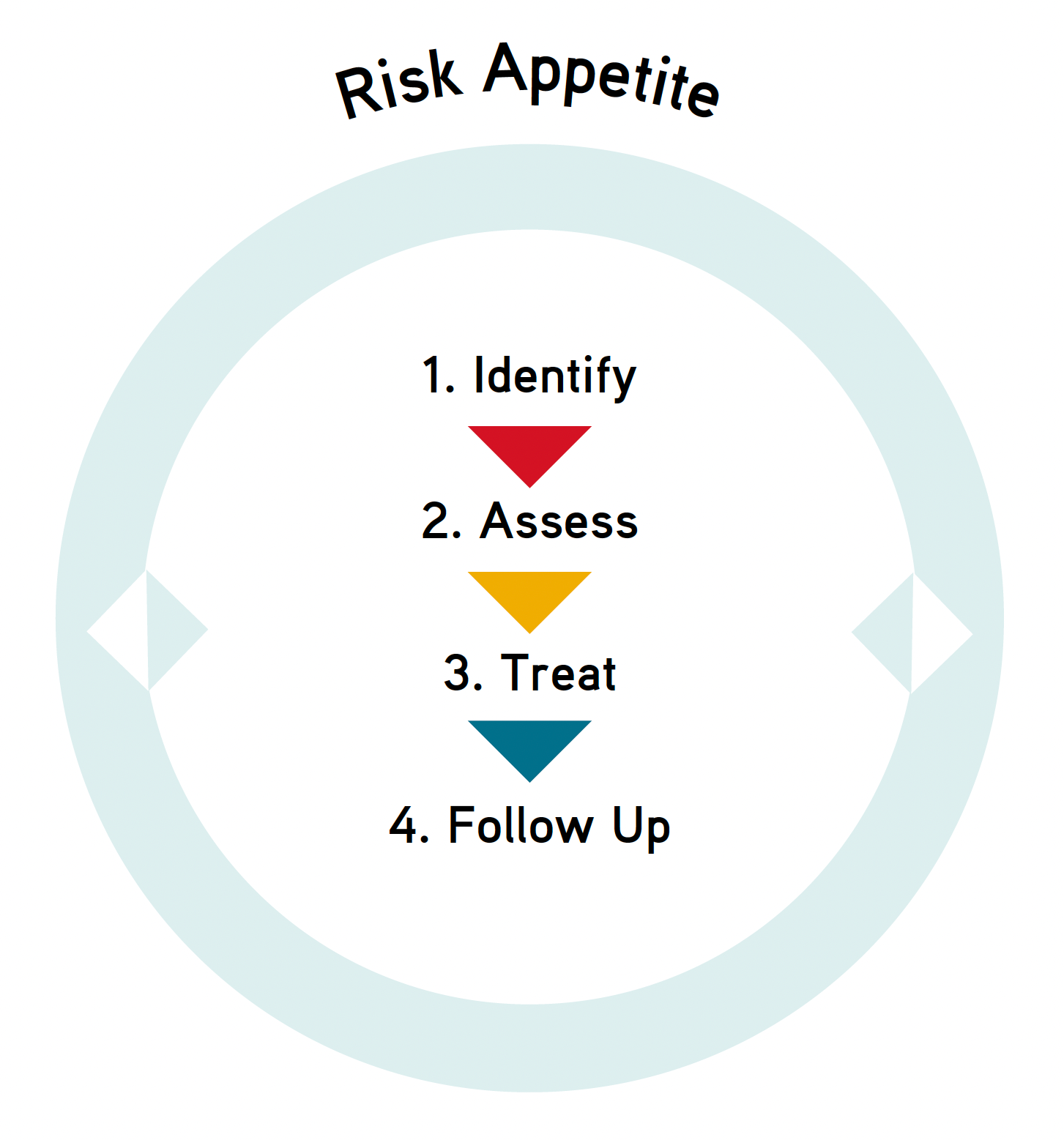
Cybersecurity
Today, technology is essential to our business, enabling sustainable operations and increased productivity. We focus on risks linked to Information and Communication Technologies (ICT), such as cyber security, service continuity, and digitalisation levels.
Cyber security is crucial for protecting our digital infrastructure and ensuring sustainable progress. Our “Technology Guideline 2022-2024” updates systems and improves action plans to identify, minimise, and control potential risks. This guideline has four pillars: Connected 360, Living Cyber Security, Carbon Footprint Reduction, and Digitally Managed.
IT Breaches in 2024
0
During 2024, we had no cases of information security breaches affecting our clients, customers and employees.
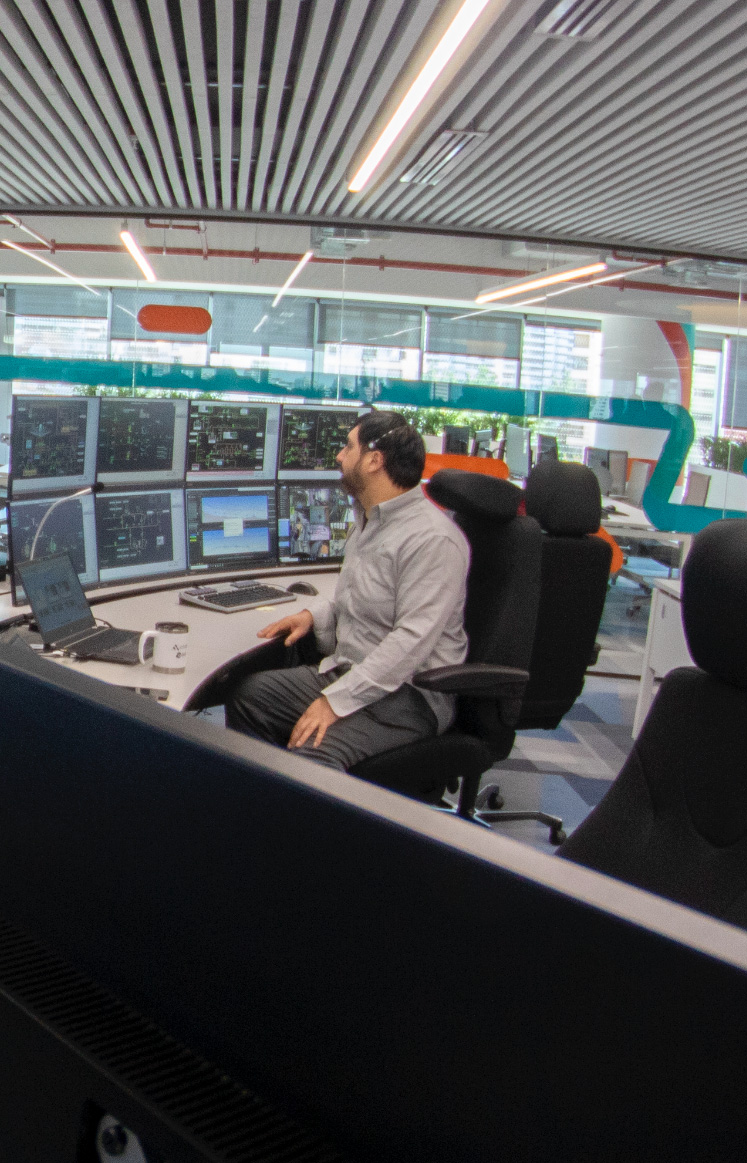
Governance framework
Antofagasta plc has implemented a formal governance framework to oversee cybersecurity matters, with clearly defined responsibilities at both Board and executive levels.
At the Board level, the Audit and Risk Committee, operating under delegated authority, is responsible for overseeing the effectiveness of the company’s internal control systems and evaluating the risk management framework, including cybersecurity risks. Through the internal audit function, the Committee ensures that robust systems are in place to identify, assess, and manage risks in alignment with the organisation’s risk appetite. It also ensures that mitigation actions are agreed upon and implemented, and that effective communication regarding risk management is maintained across the organisation.
Executive leadership in these areas is provided by the Chief Technology Officer (CTO) and the Deputy Manager of Cybersecurity (CISO), who are directly accountable for the Group’s information security and cybersecurity strategy, operations, and continuous improvement. Their responsibilities include implementing technical safeguards, establishing response protocols, and promoting awareness initiatives to enhance organisational resilience and effectively manage cybersecurity risks.
To guide this effort, Antofagasta Minerals has established a formal Corporate Information Security Guideline (Security Information Guideline). This policy outlines the Group’s commitment to safeguarding information assets and technological infrastructure. It positions information as a critical corporate asset and establishes a long-term vision in which continuous improvement of the cybersecurity model is central to business resilience. Cybersecurity is treated as an ongoing process, in which all employees carry individual responsibilities to protect data and systems as part of their daily activities.
The guideline also establishes safeguards to protect the availability, confidentiality, and integrity of information. These include mechanisms to prevent unauthorised access, tampering, or accidental loss of information. It outlines both technical and procedural controls to monitor and respond to security threats, such as errors, sabotage, or cyberattacks. Additionally, Antofagasta plc requires all Group companies to establish control measures to classify and manage critical information assets, which by design include security requirements for third parties, including contractors and external providers. Together, these commitments provide a unified framework for the confidentiality, integrity, and availability of information throughout the organisation.
The high-impact cyberattack response and recovery programme establishes controls aimed at detecting, responding to, and recovering critical IT services. These measures are aligned with the company’s broader risk management approach and are reviewed regularly to reflect the evolving threat landscape. As outlined in the Annual Report, cyber risk is explicitly categorised as one of the Group’s principal risks, and mitigation plans are in place, including awareness campaigns, simulations, and protective technical controls.
An established incident escalation process enables employees to report suspicious activity through the Technology Help Desk. Cybersecurity awareness is reinforced via training programmes, phishing simulations, and digital education campaigns, which have significantly reduced the number of users unable to recognise risky behaviour.

Chapter 3
People and Society
Health and Safety
The occupational health and safety of our workers – both employees and contractors – is a fundamental priority for our operations and daily activities.
Our health and safety strategy pillars
- Occupational health and safety risk management
- Reporting, investigating, and learning from our accidents
- Leadership
- Contractor management
2024 Highlights
Zero
fatalities
1.64
Total Recordable Injury Frequency Rate (TRIFR)
0.58
Lost Time Injury Frequency Rate (LTIFR)
34.5%
fewer High Potential Accidents than in 2023
Zero
High Potential Accidents at Zaldívar
Our People
Our success relies on having the best people at the heart of everything we do. Our vision of a better future would be incomplete without the shared values of our workforce, a diverse and inclusive group of individuals open to learning and to enjoying their personal and professional growth, who strive for excellence in their results.
2024 highlights
28,063
total workforce, including employees, permanent contractors and temporary contractors associated with projects
6,822
own employees
76%
contractors
48%
of our employees are from the regions in which our significant operations are located
27%
of our employees are women (ambition: 30% by the end of 2025)
49%
of new starts were women in 2024, as we move towards a more balanced workforce
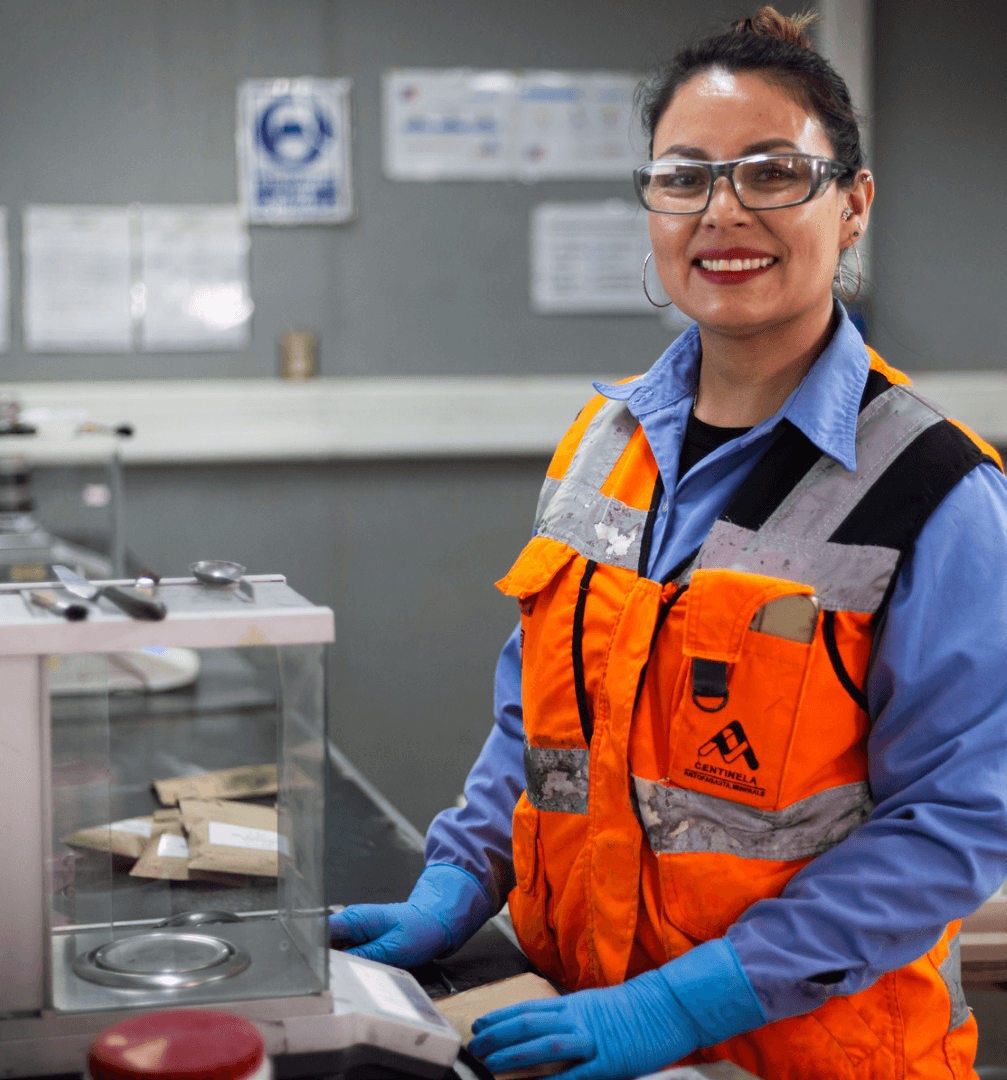
Distribution of own, full-time employees (2024)
38%
Centinela
14%
Zaldívar
22%
Los Pelambres
12%
Santiago (corporate offices)
14%
Antucoya
Attraction, Retention, and Development of Talent
We focus on attracting, retaining and developing talent to provide the capabilities needed to achieve our business objectives. Our initiatives and programmes are based on three pillars.
Our pillars
Learning and attracting talent
- Young professionals
- Apprenticeships
- Shift leaders programme
- “Turnos Relevos Mina” (Mining shift) programme
- Female-focused programmes
- Scholarships for higher education
- Internships, secondments and degree theses.
Leadership Development
- Aimed at our frontline managers and focused on self-awareness and team management.
- Development conversations for successors to key positions.
- Skills development programmes for female supervisors and training programmes for shift managers in the Maintenance area.
Integrated talent management
- Implementation of a roundtable discussion with executives from each of our companies to analyse key performance indicators in attracting, retaining and developing talent for the Mining Division.
- Definition of key positions and succession planning, as well as development plans.
Employee Development Programmes
-
Learning methods offered for employee development include:
- Coaching or Mentorship: we have coaching programmes aimed at supporting both the development of new skills when taking on roles with greater responsibility, as well as improving performance in current roles. In 2025, the Company launched an internal mentoring programme with over 60 pairs who have been trained to implement this initiative.
- Young Professionals Programme: The programme is designed to attract, develop, and retain young talent with leadership potential, accelerating their integration into Antofagasta Minerals through real roles that foster early acquisition of key competencies and values, while strengthening their commitment to the Company. This ensures the sustainability of our human capital and builds a strong pipeline of future leaders.
- Knowledge Networks: It is a structured system that connects experts across the organisation to capture, share, and apply specialised knowledge. It facilitates collaboration, strengthens decision-making, and ensures that critical expertise is accessible and sustainable within the Company. The Environmental Knowledge Network is currently being deployed to enhance the management and transfer of specialised expertise across the organisation.
- Learning Academies: We have implemented learning academies to strengthen competencies in leadership, operational excellence, and digital capabilities. These academies provide both cross-organisational and tailored learning paths, supporting development across all levels of the Company. Within the Leadership Academy, part of the learning path includes a training module for supervisors of teams, delivered by executives who act as internal trainers. This programme leverages internal expertise, reinforces the Company’s leadership culture, and strengthens managerial capabilities at the supervisory level.
- Learning Needs Identification Process: An annual structured process is carried out to identify learning needs across the organisation, aligning training initiatives with business priorities and ensuring the development of critical capabilities.
- Scholarships: We offer undergraduate and postgraduate scholarships that focus on developing the knowledge required to address the Company’s business challenges, supporting both employee growth and organisational needs.
-
Teams and Networks: the company offers ad-hoc support based on specific needs:
- Teams: Support in team dynamics and strategic guidance to help achieve team objectives.
- Peer Groups: A programme launched this year for mid-level managers, aimed at strengthening networking and leveraging collective capabilities. This is the second stage of the Leadership Programme.
- Women’s Circles: Organised by function and/or company, with the goal of fostering a sense of community around Diversity & Inclusion and developing skills.
- Network of Women Managers: In 2024, a cross-functional network was implemented for General Management-level women managers, which included training in strategic leadership skills and network building.
-
Types of programmes offered for employee development include:
-
Cultural education: through the following programmes and trainings:
- Implementation of the programme for Supervisors with teams: Focused on Chilean Standard NCh3262 and the Karin Law (Conduct: I Integrate Diverse Perspectives).
- Training on respectful work environments for employees: Delivered on-site through internal facilitators, aimed at enabling certification under Chilean Standard NCh3262.
-
Cultural education: through the following programmes and trainings:
The Company measured the impact of the Leadership Academy for which, a 360-degree assessment was conducted for all participants at the Assistant Manager/Superintendent level. This assessment was carried out before and after completing the programme, with the aim of evaluating the impact on the development of competencies associated with our Leadership Framework.
Long-Term Incentives for Employees
The Company provides long-term incentives for employees below the senior management. In fact, LTIP awards are split between Restricted Awards and Performance Awards. Restricted Awards vest only if the relevant employee remains employed by the Group on the vesting date. Performance Awards vest subject to both the satisfaction of performance conditions and the relevant employee remaining employed by the Group on the vesting date. The same performance criteria apply to all participants in the LTIP and are designed to link business objectives, shareholder value and senior management rewards. − Performance Awards reward performance over three years. There is no additional holding period before these amounts are paid. − Restricted Awards vest one-third in each year over a three-year period following the grant of the award. 1) LTIP applies for the CEO (level 0), Vice presidents (level 1), General Managers (level 2) and Managers (level 3). This is for our Mining and Transport Divisions. 2) The type of employees below the senior management level the program applies to are Managers (level 3) Company's long-term incentives for employees below the senior management level are on average paid out after 3 years. The percentage of Company's workforce below senior management level (max. two levels from the CEO) that this programme applies to is 0.8%.
The long-term incentives include targets associated with sustainability performance. The programme by results has a scorecard where one of the KPIs, according to design, is always a KPI of sustainability. In 2024 the KPI accounts for the 12.5% of overall score.
Wellbeing
One of our ongoing challenges is to create and promote opportunities for all our employees to balance their personal, family and work interests. This balance – known as the work-life balance – seeks to ensure that women and men can develop professionally and personally. This requires the reorganisation of work times and areas, as well as the modification of traditional roles.
We guide the wellbeing of our employees with our Work-Life balance guidelines. The guidelines are designed to improve the distribution of their time between work, family and recreational activities, and the benefits provided go beyond what is stipulated by Chilean legislation. In this way, we have a hybrid system of remote and in-person work in accordance with the operational needs of the mining companies.
Benefits of the wellbeing guideline
Physical
- Medical and dental insurance
- Free pre-employment preventive exams
- Preventive programmes for possible associated risks (silicosis, hypobaric conditions, sleep hygiene)
- Periodic health checks and other health campaigns
Mental
- Psychological support
- Customised individual programmes
Financial
- Financial education
- Life insurance
Social
- Volunteer work
Personal
- Special leave (birth, death, marriage, among others)
- Vivo Flex (time away from work for personal, health or family care reasons)
- Parental benefits
Employee Support Programmes
The Company has employee support programmes to foster employees´ health and well-being in, among others, the following areas
- Part-time working options: As a work-life balance measure, a phased return-to-work arrangement is offered to mothers returning from parental leave. For a limited period, this allows them to gradually increase their working hours—from part-time to a full-time schedule.
- Childcare facilities or contributions: In compliance with legal requirements, the Company facilitates access to childcare through either a monthly childcare allowance or the payment of expenses at childcare centres.
- Paid family or care leave beyond parental leave (care for a child, spouse, partner, dependent, parent, sibling, or other designated relation with a physical or mental health condition): The Company offers a leave policy for employees who have a direct family member with a disability (children, parents, spouse, partner, partner’s children, or siblings), certified through the National Disability Registry (RND) or an Invalidity Pension (updated annually). This leave consists of several business days per year that can be used for their care and/or support. Additionally, the Company provides a leave called Vivo Flex – My Family Moment. It allows employees to take time off to care for a direct family member (children, parents, spouse, partner, partner’s children, or siblings) who is suffering from a serious health condition and is in a life-threatening situation.
Trend of Employee Wellbeing
| Unit | 2021 | 2022 | 2023 | 2024 | Target for 2024 |
| % of employees with top level of engagement, satisfaction, wellbeing, or employee net promoter score (eNPS) | 88 | 78 | 78 | 88 | n/a |
| % of employees who responded to the survey | 21* | 91 | 91 | 94 |
To collect and measure this information, the Company uses the Qualtrics XM platform: the leading experience management program.
* In 2021, a "Pulse" survey was conducted to assess employee wellbeing. This survey did not cover the entire organisation, but only a percentage of it, which resulted in a 21% participation rate.
Balanced Workforce
At Antofagasta Minerals, maintaining a balanced workforce is a strategic priority and an ethical commitment, promoted from the highest organisational level. We believe balanced teams strengthen the culture and work environment, enhancing productivity and sustainability.
We have a plan with approaches and goals for cultural transformation, to allow everyone to reach their full potential. Additionally, we have a directive to ensure gender equality and to balance work, family, and personal life with equitable processes and respectful, discrimination-free work environments.
Composition of the female workforce – As of 31 December 2024
27%
women in total workforce (as a % of total workforce)
31%
women in all management positions, including junior, middle and senior management (as a % of total management positions)
32%
women in junior management positions, i.e. first level of management (as a % of total junior management positions)
29%
women in senior management positions, i.e. maximum two levels away from the CEO or comparable positions (as a % of total senior management positions)
The three focuses of our plan are:
Balanced teams
Promote balanced, bias-free teams where talents are visible, and the work-life balance and co-responsibility are encouraged.
People with disabilities
Create work environments that provide equal opportunities for people with disabilities, allowing them to develop their full potential.
Global and intercultural profiles
Manage safe environments for all people, regardless of their origin, ethnicity or nationality, incorporating talent from our local communities.
Our Suppliers
A responsible supply chain is crucial for addressing the diverse economic, social, environmental, and governance challenges faced by companies.
3,962
annual suppliers
46%
local suppliers
$691 m
purchases to local suppliers
94%
of our suppliers are Chilean businesses
In 2024, we continued to implement the “Suppliers for a Better Future” Programme, aligning supplier best practices with the Group’s vision and strategic framework. This programme fosters collaboration with suppliers, focusing on five key areas for mining development.
- People: Promote local jobs, hiring of women, enhance diversity and inclusion, and the respect for human and labour rights.
- Sustainability: Reduce the carbon footprint in the supply chain and promote circular economy solutions.
- Competitiveness: Promote local purchases, and a culture of competitiveness, productivity, and integrity in our suppliers’ processes.
- Innovation: Promote innovation among our suppliers as a lever to contribute to the programme’s challenges.
- Supplier development: Develop the capacities of our regional suppliers and SMEs to face these challenges.
This programme applies to certain suppliers. To fulfil this programme, we have set goals to be met by 2025, including support and training for suppliers who need this. We assess these goals annually, using 2022 as our baseline.
The strategic direction of the Suppliers for a Better Future Programme is guided by its Steering Committee, composed of the Vice President of Human Resources, the Vice President of Corporate Affairs, and the Chief Financial Officer. The highest authority for decision-making within the programme is the Procurement Manager, supported by a dedicated Sustainable Procurement Lead and a team based in the Centre of Excellence in Purchasing Practices.
Before signing any contracts, we conduct thorough due diligence in areas such as company ownership, involvement of politically exposed persons, antitrust issues, commercial behaviour, legal cases, conflicts of interest, compliance models, and procedures for the prevention of slavery, child labour, and human trafficking.
All contracts include clauses related to ethics, anti-bribery, anti-money laundering, and compliance with Chilean Law No. 20,393 on the criminal liability of legal entities, as well as the UK Bribery Act and the Modern Slavery Act.
Since 2022, we have conducted audits to ensure that contractor companies comply with both minimum and general standards. Sustainability criteria have been applied when evaluating bids for contracts exceeding $10 million. Higher scores are awarded to companies demonstrating strong carbon emissions reduction strategies and targets, robust governance, local recruitment, and diversity and inclusion.
To support this, we launched a new guide for applying sustainability criteria in Mining Group tenders. This guide consolidates existing guidelines on energy efficiency, internal carbon pricing, and sustainability performance evaluation.
Our Procurement team receives ongoing training on the application of these sustainability criteria in tender processes. Regular internal communications also reinforce adherence to our Sustainability Guidelines.
In 2024, 141 suppliers were assessed through desk-based evaluations, exceeding the annual target of 132. This represented 24.9% of unique significant suppliers. Importantly, no suppliers were identified as having substantial actual or potential negative impacts during the period. Nevertheless, the company proactively maintained readiness to deploy mitigation tools: 35% of suppliers flagged for potential risks (based on prior cycles) had documented corrective or improvement plans in place. While no suppliers were terminated in 2024, the evaluation process remains an integral part of the Group’s ESG due diligence.
In terms of supplier development, Antofagasta Minerals supported 50 suppliers in implementing corrective action plans and included 465 suppliers in formal capacity-building programmes, surpassing the 2024 target of 400. These programmes covered ESG topics such as climate strategy, diversity and inclusion, compliance, and operational excellence. In total, 82% of significant suppliers participated in at least one structured capacity-building initiative, underscoring the company’s commitment to long-term supplier engagement and ESG maturity.
Download full PDFWorking with Communities
We maintain continuous, respectful, and collaborative relationships with host communities, actively creating social value and contributing to their wellbeing.
10
years of the Somos Choapa Programme, a public-private alliance through which we implement our social management plan at Los Pelambres
150.4 ha
in the Choapa province have been modernised thanks to the Agricultural Strengthening programme
+3,000
people took part in over 20 activities to recruit potential workers for the Centinela Second Concentrator Project
+20
programmes have been evaluated using Theory of Change and Social Return on Investment (SROI) tools
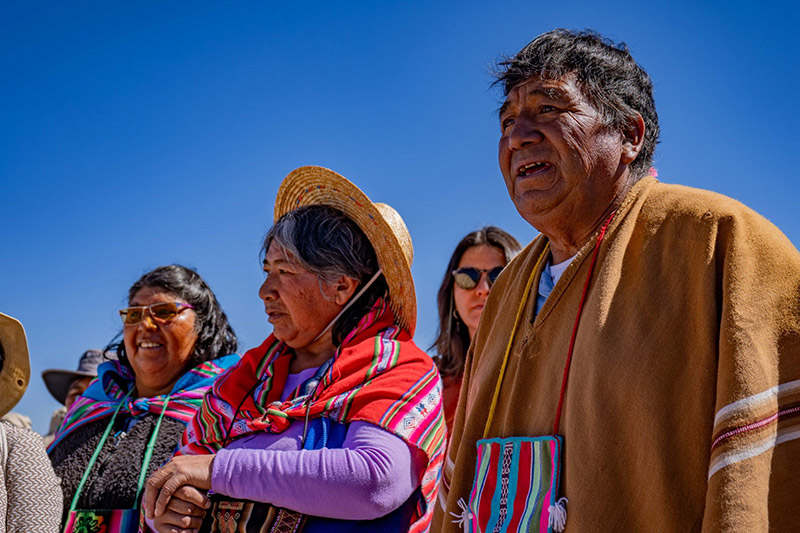
Highlighting the Cultural Legacy
In 2024, Zaldívar and the Camar Community initiated the conservation and revitalisation project for the Tambo de Camar, a pre-Hispanic Inca Trail building declared a World Heritage site in 2014. Historically, the Tambo served as a rest and provisioning stop for travellers and caravans. It suffered significant damage in 2019 due to a flash flood. This project will implement a new path and lookout point and protect all archaeological findings discovered during its development. Another cultural initiative in 2024 preserved the heritage of the Peine community in a recipe book, "Ancestral Recipe Book with Preservation of the Kunza Language", featuring ancestral recipes for traditional foods from grandparents and ancestors.
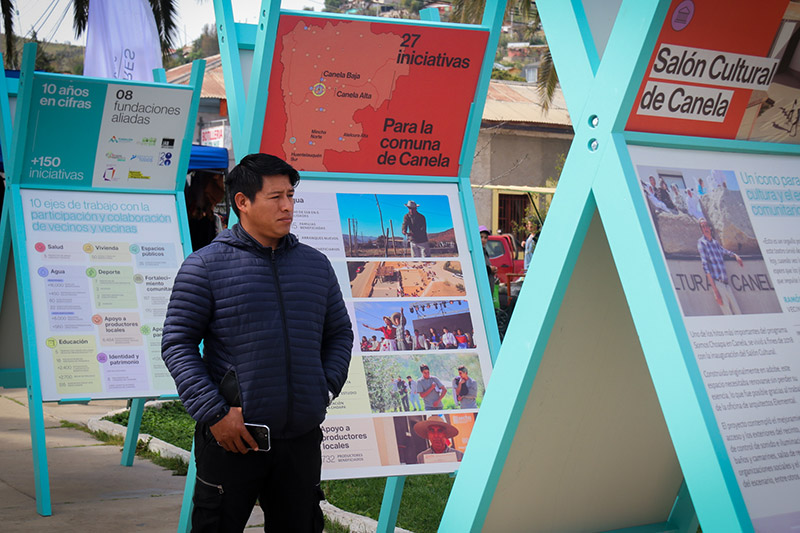
Somos Choapa: 10 years creating value in the Coquimbo Region
The Company presented the achievements and lessons learned from Somos Choapa at the Regional Commitment Seminar in Coquimbo. The event was organised by the local newspaper El Día, the Regional Development Corporation (CIDERE), the Catholic University of the North, and Los Pelambres.

APRoxima and APRoxima En Red
The APRoxima programme has provided support to 80 Rural Sanitation Services (SSR), providing access to drinking water for over 64,200 beneficiaries in rural areas of the Choapa Province. This initiative is complemented by APRoxima En Red, which aims to enhance SSR water management through training, a telemetry system for monitoring and transmission, and big data tools for data storage, visualisation, and analysis. This ensures the continuity and security of the water supply for human consumption while optimising the management of the province’s water resources.
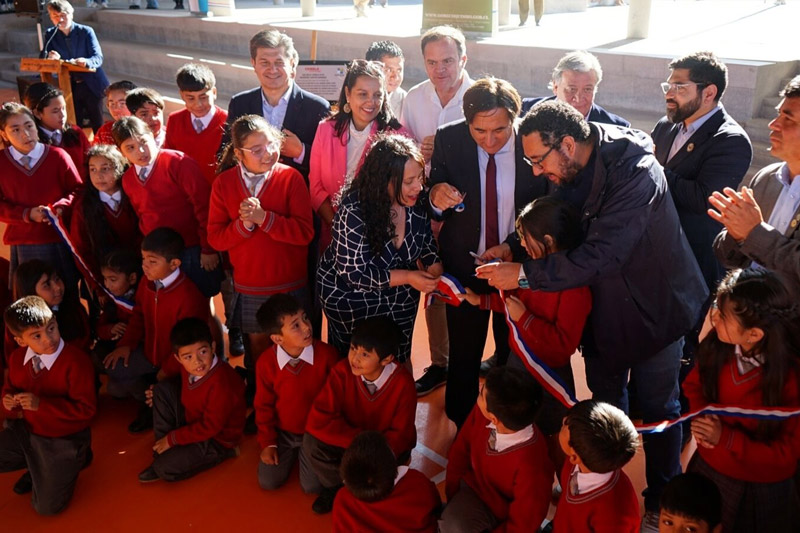
The commune of Canela inaugurated one of the most modern schools in the country
In December 2024, the Ministry of Education inaugurated the new Canela Alta Primary School infrastructure. Severely damaged by the 2015 Illapel earthquake, the school reopened in 2025. Los Pelambres financed the design through the Somos Choapa Programme, and the Regional Council (CORE) approved a budget of over $15 million for its construction.
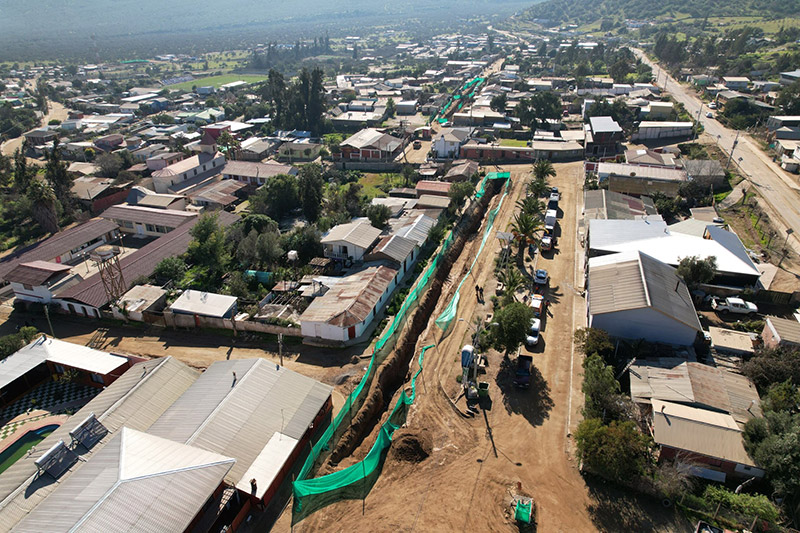
Start of works on the Caimanes Sewage and Urbanisation Project
Beginning of the Caimanes sewerage and urbanisation project Los Pelambres, in collaboration with the Municipality of Los Vilos and the regional government, commenced the Caimanes sewerage and urbanisation project after an extensive evaluation period. This project provides the town with a sewerage system, a new treatment plant and household connections that align with population growth. It also involves paving main roads and constructing or improving sanitary facilities, including public toilets and other infrastructure. The project aims to enhance water quality for human consumption and the irrigation of productive systems. 1,300 people have benefitted and received approximately $4,400,000 from Los Pelambres.
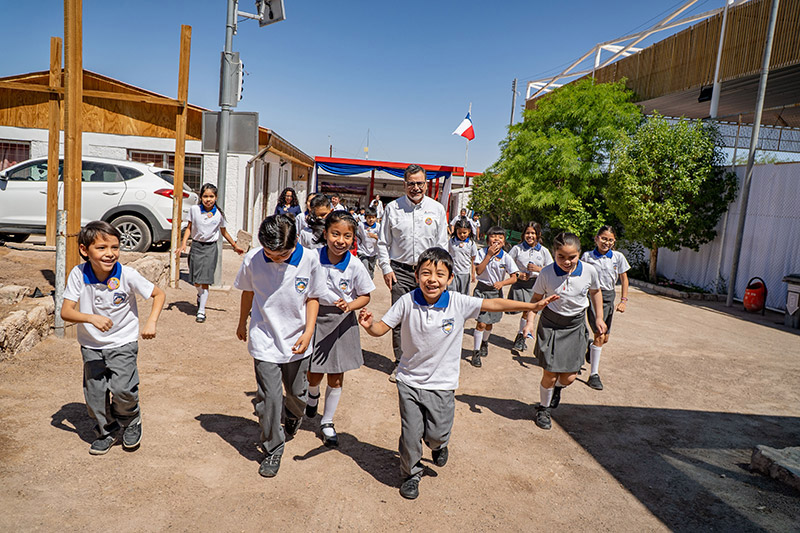
Inauguration of the renovation works as San Roque de Peine School
This initiative was developed collaboratively by the Municipality of San Pedro de Atacama, the parents and students of San Roque School, and Zaldívar. The project aims to create a healthy, inspiring, and safe environment for students, enhancing their learning experience. As part of this effort, a new teacher has been added to the school staff, and classrooms and educational facilities have been renovated and upgraded. Additionally, a children’s play area has been constructed.
Labour Practices Commitment
Antofagasta Minerals is committed to upholding fundamental labour rights and ensuring fair treatment across its workforce. As outlined in the Company’s Code of Ethics which applies to all employees, Board members (as appropriate) and external service providers to the Group (“persons”). All individuals must comply with applicable laws and regulations, including (among others) those relating to employment legislation (article 1 page 8).
In line with this commitment, the Company adheres to Chile’s strict labour regulations, as stated in its Annual and Sustainability reports. These obligations include restrictions on overtime (subject to daily cap); maximum working hours; pay for men and women is determined according to the salary scale (Please see: Routinely monitor the gender pay gap to achieve equal remuneration for men and women), paid annual leave and proper notice periods depending on the ground of termination.
Regarding employee wages, Antofagasta goes beyond its legal obligations. Each January, the Company updates its internally defined Ethical Minimum Income in line with the Consumer Price Index (CPI), ensuring that it remains above the national minimum wage. This standard also applies to all contractors.
Looking ahead, starting in 2025, Antofagasta Minerals is developing a living wage methodology. The Company has commissioned the consulting firm MERCER to conduct a living wage assessment in the six most representative cities where both own employees and those of partner companies reside. This assessment evaluates the cost of a representative basket of goods and services, adjusted for different household compositions, to determine the income level needed to afford a decent standard of living. This reference value enables Antofagasta to compare workers’ incomes against that benchmark.
- Monitor working hours including overtime management We implement an attendance record for the purpose of recording employees’ attendance and determining the total number of hours worked each day by each employee.
- Ensure employees are paid for overtime work For employees with a contract that includes working hours control, any overtime must be agreed upon with the supervisor to address special situations and is paid with a 50% surcharge. It may not exceed two hours per day. The payroll departments ensure strict compliance with these conditions and make sure that the payment is included in each worker’s salary.
- Regularly engage with workers' representatives on working conditions In the case of worker representative organisations (unions), weekly meetings (labour agendas) are held to provide a space for raising issues that were not submitted through the formal grievance and complaint system. Additionally, semi-annual meetings are held with general managers, the Vice President of HR, and the CEO, where unions also have the opportunity to present cases that were not addressed through the formal system.
- Routinely monitor the gender pay gap to achieve equal remuneration for men and women We have an analytical methodology that allows us to assess the existence of pay gaps. This methodology was validated under the Chilean Standard NCh3262, which aims to identify and address gender gaps within organisations. Additionally, this year, information is being collected from the subsidiaries using the same methodology already validated by NCh3262. Furthermore, the gender gap calculation -according to the UK definition- is presented annually to the REMCO (Board’s Remuneration Committee).
We define target market positioning for our compensation and benefits schemes by identifying representative samples of companies with which we compete for talent and selecting the market percentile to be used as a benchmark within that sample. Market positioning is segmented — that is, differentiated by job levels and functions — to ensure competitiveness is aligned with the relevant reference markets.
To ensure internal equity -whether related to gender or other criteria- the Company builds salary scales based on its market positioning, the results of market studies, and job groupings defined internally. Additionally, each position is evaluated using a global compensation methodology (GGS/WTW) to determine its job level, thereby objectively establishing its relative weight and corresponding pay level. The set of pay bands constitutes the Salary Scale.
For the supervisors and executive levels, the Company annually assesses the feasibility of applying adjustments to base salaries based on market growth trends and internal competitiveness variables, considering factors such as performance and potential. Moreover, base salaries are adjusted quarterly in accordance with changes in the Consumer Price Index (CPI).
For operator roles, salary adjustments may also result from internal mobility, including promotions and lateral moves, as part of individuals’ career development within the Company.
-
Expand social protection coverage for workers beyond public programmes
There is complementary health, catastrophic, and dental insurance coverage for company employees, which supplements each person’s primary healthcare system. Additionally, life insurance is provided.
The Company also offers programmes that enhance social protection for retirement by matching the amount employees contribute to Voluntary Pension Savings (APV).
Where applicable, an annual preventive health examination is offered to detect risk factors and early stages of illnesses. - Ensure employees are taking their paid annual leave entitlements Awareness campaigns are carried out through the managers to encourage the use of vacation time. In addition, follow-up is conducted on cases of individuals with more than two accumulated vacation periods in order to schedule their use.
- Provide training or reskilling to mitigate negative effects of industrial or climate transition changes In cases of upskilling due to technological changes, we have examples such as the introduction of autonomous trucks or the implementation of Integrated Operations Centres (GIOs), where specific training has been provided so that, for instance, a haul truck operator can transition to operating the truck remotely. The same applies to the implementation of GIOs.
Additionally, starting in 2025, the Digital and Innovation Academy is being rolled out, aiming to build knowledge and develop digital skills for the mining of the future. The Academy’s content focuses on deepening understanding in areas such as Digitalization, Cybersecurity, Innovation, Data-Driven Decision-Making, and AI/Advanced Analytics.
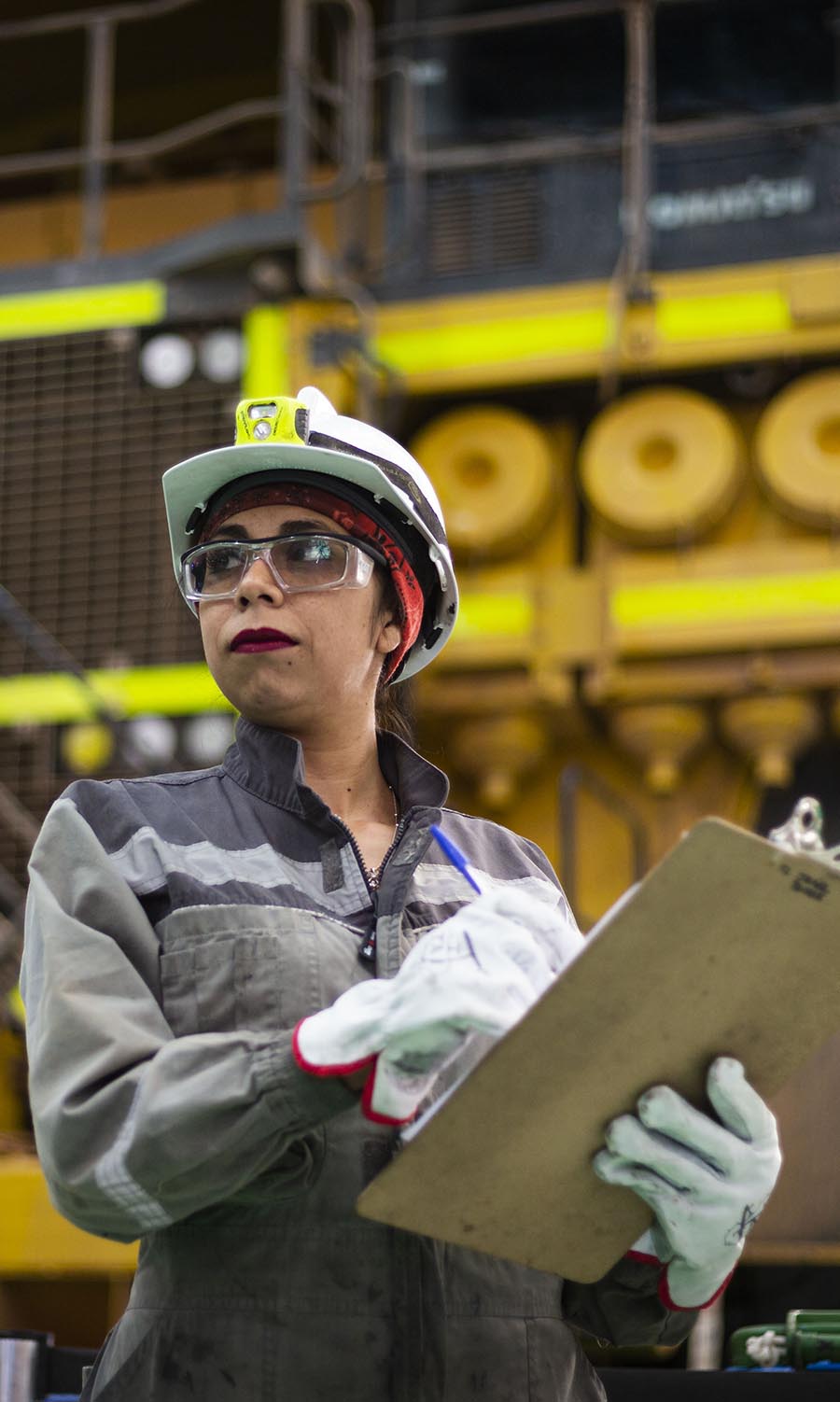
Chapter 4
Environment
Environmental Management
Environmental management plays a strategic role in achieving our purpose. Meeting requirements associated with sustainability, regulatory compliance and stakeholder expectations are an important aspect of our business.
Centinela and Zaldívar were the first mining companies to recertify The Copper Mark under the new framework of 33 criteria.
Zero
operational events with significant environmental consequences
GISTM compliance
with El Mauro, from Los Pelambres, and Centinela thickened tailings deposit
72
Environmental Approval Resolutions (RCA)
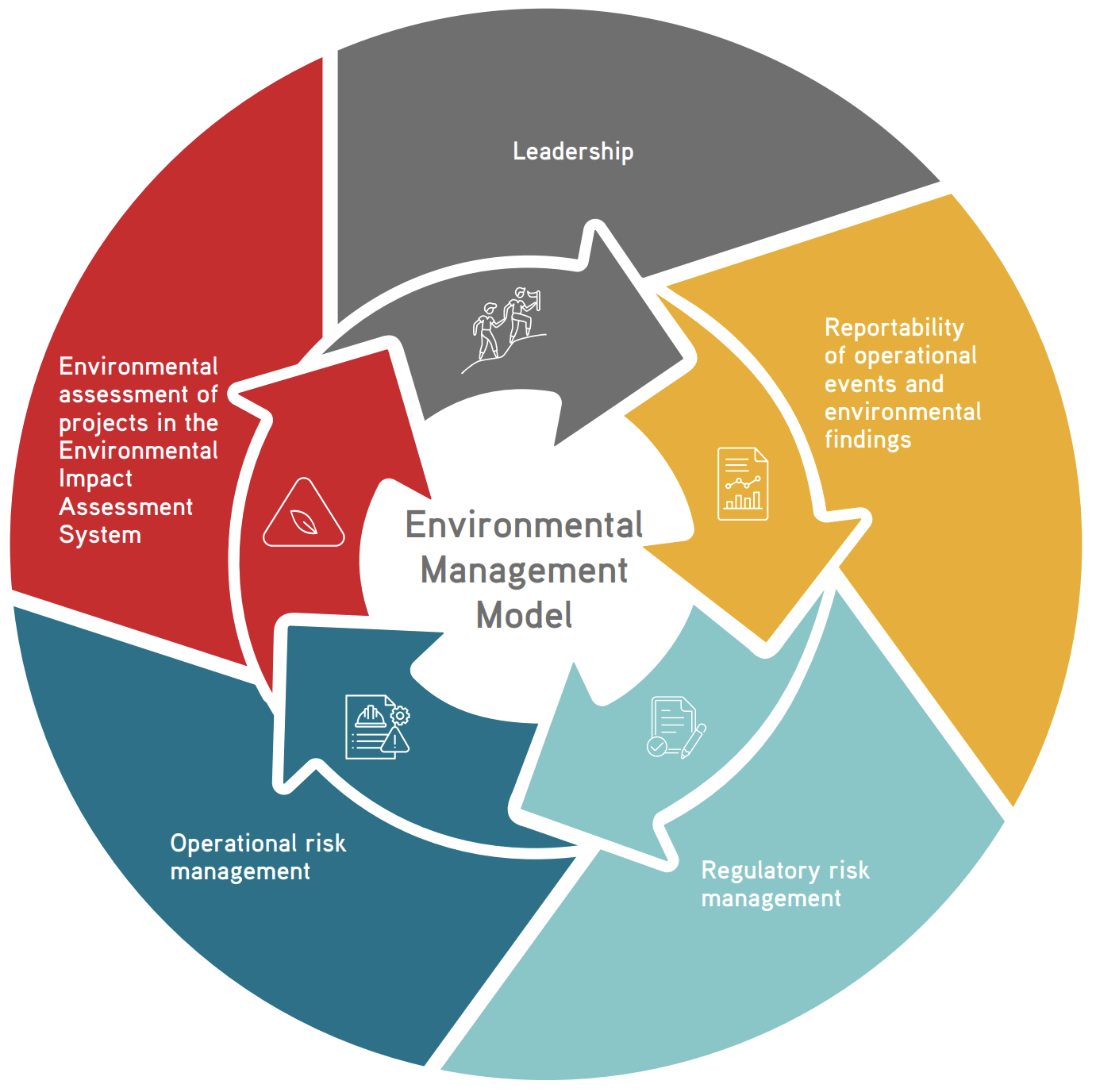
Environmental CAPEX and OPEX
| Currency: USD | FY 2021 | FY 2022 | FY 2023 | FY 2024 |
| Capital Investments | 31’148’452 | 35’750’552 | 42’318’014 | 106’497’132 |
| Operating Expenses | 24’905’229 | 27’322’460 | 17’847’567 | 15’568’265 |
| Total Expenses (= Capital Investment + Operating Expenses) | 56’053’681 | 63’073’012 | 60’165’581 | 122’065’397 |
| % of operations covered: Revenue | 97.7% | 97.7% | 100% | 100% |
Climate Resilience
Contributing to the global goal of decarbonising the economy involves reducing our greenhouse gas (GHG) emissions in the medium and long term through various initiatives aimed at decarbonising our operations and using resources efficiently.
1.75 tCO2e/tCu
Emissions intensity
1,228,924 tCO2e
Scope 1 emissions
887 tCO2e
Scope 2 emissions (market-based)
1,229,811 tCO2e
Total scope 1 and 2 emissions (market-based)

Energy Management
In line with the third Pillar of our Climate Change Strategy (Efficient use of strategic resources), our Energy Policy establishes that energy is a strategic resource, and its management must ensure a safe, economic, efficient, and sustainable supply for our companies.
16,649 TJ
Fuel consumption
3,951 GWh
Electricity consumption
100%
Renewable electric energy contracts
Los Pelambres
We measure the Energy Performance Indicators (EnPIs) for the highest consumption areas. For Los Pelambres these are haul trucks, grinding processes, flotation, and tailings and fluid transport (TFT).
A project has been initiated to enhance operational control in flotation and adjust ball loading in Semi-Autogenous Grinding (SAG) mills. This initiative is projected to save 35 GWh, representing 2.2% of the mine's total electricity consumption.
Centinela
Centinela’s Energy Performance Indicators (EnPIs) with the highest consumption are related to haul trucks, grinding, electrowinning, and the Sea Water Pumping System (SIAM).
The Company implemented the SIAM water pumping operational control improvement project, which saved 9 GWh during 2024, equivalent to 0.6% of the mine's electricity consumption.
Antucoya
For this company, the most relevant Energy Performance Indicators (EnPIs) come from haul trucks, electrowinning, and gravel operations.
Therefore, Antucoya implemented a temperature control and acid mist improvement project for electrowinning which saved 8 GWh during 2024, equivalent to 2.3% of the mine's total electricity consumption.
Zaldívar
Zaldívar’s Energy Performance Indicators (EnPIs) highest consumption areas are linked to haul trucks and electrowinning.
Notably, the project aimed at improving the speed control of the haul trucks achieved significant results. In 2024, it saved 544 m³ of diesel, equivalent to 1.4% of the mine's total diesel consumption.
Water Stewardship
Water is a vital resource for both communities and mining companies. In Chile, evolving environmental conditions have resulted in continental water becoming an increasingly scarce resource.
Sustainable water management is crucial due to the nature and location of our operations. Three of our four mining operations are in the Atacama Desert, and the fourth, Los Pelambres, is in the drought-affected Choapa Valley.
Los Pelambres’ desalination plant
inaugurated in 2024
Construction of the Los Pelambres’ Future Growth Enablers Project
including an expansion of the Company’s existing desalination capacity
58%
of water extraction was from sea water sources (2023: 60%)
Our water management framework

Business Impacts of Water Related Incidents
| Incidents | Currency | FY 2021 | FY 2022 | FY 2023 | FY 2024 |
| Total actual and opportunity costs from water-related incidents | USD - Dollar | 0 | 0 | 0 | 0 |
Biodiversity Protection
Biodiversity protection is part of our long-term sustainability approach and policy. We aim to deliver a net zero loss of biodiversity by minimising the impact of our operations and working to mitigate and compensate for potential negative effects in line with the ICMM’s Nature position statement.
27,808 ha
Los Pelambres protected area in the Choapa Valley (Coquimbo region)
+6
times larger than the area used by Los Pelambres
4
nature sanctuaries: Laguna Conchalí, Palma Chilena de Monte Aranda, Quebrada Llau-Llau, Cerro Santa Inés
Biodiversity Risk Assessment
Biodiversity risks in our four mining companies are assessed using the Antofagasta Minerals risk management framework. This methodology, based on ISO 31000 and COSO ERM, is applied across all operations, projects, exploration activities, and support areas, providing a comprehensive view of the uncertainties that affect our strategic goals. Accurate and timely identification, assessment, and management of principal risks clarify the actions needed to achieve our objectives.
Sustainability risks, including biodiversity, are regularly monitored to identify uncertainties and enable timely measures. Increasing risks, particularly from climate change, present new challenges that require an integrated approach.
Each mining company holds an annual risk workshop to review and update business unit risks and mitigation activities. These workshops assess principal risks that may affect stakeholder relationships, resource availability, operations, and potential future growth.

Mine Closure Planning
Mine closure is a strategic and integrated process at each of Antofagasta Minerals’ mining operations. It begins at the earliest stages of project development and continues throughout the life of the operation.
4
Current production assets have required community consultation
100%
% of current production assets that have required community consultation
2
Number of development projects that are in the process of community consultation
50%
% of development programs that are in the process of community consultation
Each operation develops closure plans in accordance with local regulation, considering international commitments. These plans include physical and chemical stability commitments along with additional commitments related to community engagement, biodiversity, climate change, and post-closure land use, where applicable.
As required under Chilean law, all our operations have closure plans approved by SERNAGEOMIN (the National Geology and Mining Service of Chile), which is the public technical agency responsible for mining regulation and safety in Chile, including closure plans. Closure plans are updated periodically.
In 2025, we updated Antofagasta Minerals’ Integrated Mine Closure Standard - aligned with local regulations and international best practices, ensuring that closure is planned, executed, and monitored in a responsible and sustainable manner- to incorporate guidelines from our Biodiversity and Climate Change Standards as well as our Tailings Policy, all of which are aligned with the International Council on Mining and Metals (ICMM) Integrated Mine Closure - Good Practice Guide.
Regular reviews ensure closure cost estimates are comprehensive and up to date
Closure cost estimates are reviewed and updated at least every two years, incorporating new technologies and updated risk assessments. Each operation maintains a plan which includes cost bases and estimation methodologies, as the closure horizon approaches.
Progressive closure and planning for temporary or partial closure are considered during our operations
Progressive closure is a core principle of our strategy. The Standard encourages early implementation of closure measures during operations to reduce long-term liabilities and to plan for scenarios of temporary or partial closure. For example, in 2024, Zaldívar submitted a temporary closure plan to the mining authority in case its EIA (Environmental Impact Assessment) was not approved before the previous permit expired in May 2025 (for further information, please refer to Antofagasta plc’s Annual Report, p. 189). This reflects that each operating company’s commitment to regulatory compliance and responsible closure planning in all operational scenarios.
Financial provisions are in place to cover closure obligations and protect the company
Closure provisions are included in Antofagasta plc’s consolidated financial statements and reflect the present value of future closure costs (for further information, please refer to Antofagasta plc’s Annual Report, p. 225). Antofagasta plc also discloses the climate-related risks that could affect these provisions, in line with the Task Force on Climate-related Financial Disclosures (TCFD) recommendations. As of 31 December 2024, Antofagasta plc had updated its provisions using real discount rates between 2.43% and 2.58%, with closure activities expected to extend through 2058.
Social Mine Closure Programmes
All of Antofagasta Minerals’ mining operations incorporate community transition and legacy planning into their mine closure planning. According to Antofagasta Minerals’ Integrated Mine Closure Standard, each of these operations aim to:
- Ensure an organic and connected transfer of sites to local communities and stakeholders.
- Leave a positive legacy that contributes to sustainable development in the region.
- Promote site rehabilitation to enable beneficial post-closure land use by communities, where feasible.
Antofagasta Minerals’ Integrated Mine Closure Standard covers the following social aspects:
-
Social closure plans
Our closure plans require the inclusion of social aspects, which involve identifying and evaluating community-related risks and opportunities. These are informed by baseline studies and stakeholder inputs, aligned with ICMM and the International Finance Corporation (IFC) guidelines. -
Mine closure planning prior to mine development
Closure planning is integrated into Antofagasta Minerals’ Asset Delivery System (ADS), which governs project development from early stages. For sites with less than five years to closure, the Standard mandates that closure be treated as a formal engineering project. -
Local capacity development during mine operation
The Standard emphasises stakeholder engagement and community involvement throughout each mine’s lifecycle. During operations, Antofagasta Minerals promotes the integration of closure concepts into planning and encourages the development of local capacities to support long-term sustainability. -
Collaboration with economic diversification programmes during mine operation
Each operation facilitates relationships with stakeholders and integrates community interests into closure planning. Our first approach is during the Environmental Impact Assessment (EIA), and once the environmental permit has been obtained, the Standard includes the dissemination of our Early-Stage Closure Standard, to incorporate our stakeholders into the relevant phases of closure planning and a Community Dissemination Programme, which outlines how closure plans are communicated and aligned with local development goals. -
Social closure impact assessment in the run-up to closure
As part of the risk evaluation process, a social closure impact assessment is performed to ensure that social impacts are assessed and mitigated in the run-up to closure. This covers:- Social risks and impacts associated with closure.
- Evaluation of stakeholder concerns and community dynamics.
Antofagasta Minerals’ Integrated Mine Closure Standard requires the following additional dimensions to be included, beyond what is required by local regulations:
- Social Aspects: Identification and evaluation of social risks, including potential impacts on local communities, stakeholder expectations, and social commitments.
- Biodiversity: Assessment of biodiversity-related risks and opportunities, aligned with AMSA’s Biodiversity Standard and international best practices.
- Climate Change: Consideration of climate-related risks that may affect closure measures or post-closure site conditions and nature-based solutions, aligned with AMSA’s Climate Change Standard
- Other Technical Guidelines: Integration of additional standards such as the Global Industry Standard on Tailings Management (GISTM) or other relevant corporate or international frameworks.
- Closure-focused stakeholder engagement
The Standard mandates:
- Updates to closure planning every two years or upon events such as permit changes. These updates must incorporate stakeholder input.
- Each company must define closure success criteria aligned with stakeholder expectations. These criteria must be specific, measurable, achievable, relevant, and time-bound (SMART), and cover areas such as physical and chemical stability, socio-economic development, land use, and biodiversity.
- Continuous communication with communities throughout the closure process.
- Development of Community Dissemination Programmes.
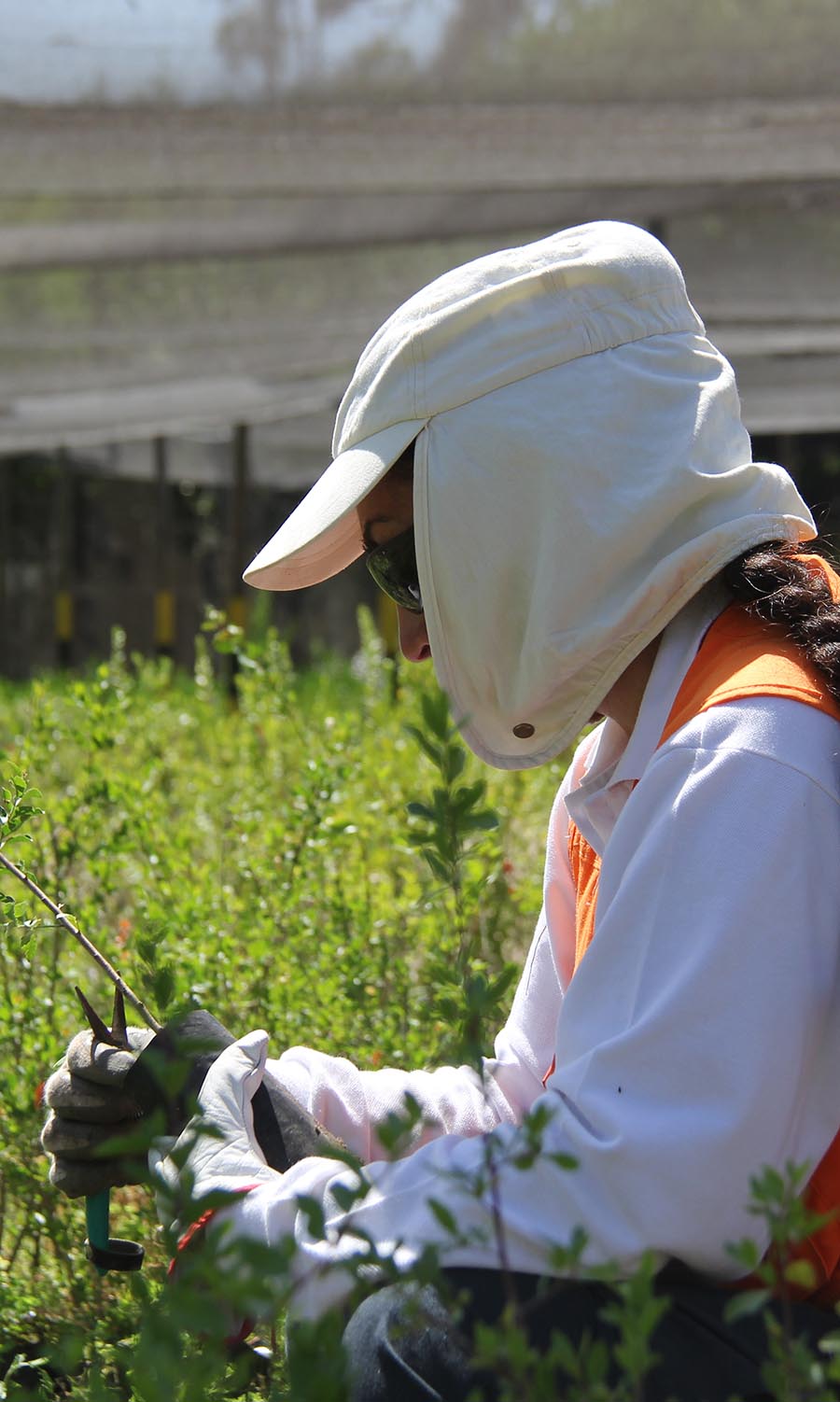
Chapter 5
Downloads/Appendix
Download the full Sustainability Report 2024
Download Sustainability Databook 2024
Visit the Online Sustainability Report 2023
Overview
Download our CEO's statement
Download our Sustainability and Stakeholder Management Committee Chair's message
Download our double materiality assessment
Chapter 1 - We are Antofagasta Minerals
Download our value chain
Download our partnerships and awards
Chapter 2 - Governance
Download our responsible leadership section
Download our risk management and cyber security sections
Chapter 3 - People and Society
Download health and safety
Download our people section
Download our suppliers section
Download working with communities
Chapter 4 - Environment
Download environmental management section
Download climate resilience section
Download energy management section
Download water stewardship section

